
Staff, Students & the Basic Course
1948-58
Introduction
This long decade marks the tenure of Lawrence Gowing as Professor of Fine Art and the establishment of new and vigourous programmes of exhibtions, acquisitions and teaching.
By 1954 Victor Pasmore and Richard Hamilton were established as members of staff, joining longer-serving staff such as Leonard Evetts, Murray McCheyne, Louisa Hodgson and art historian Ralph Holland.
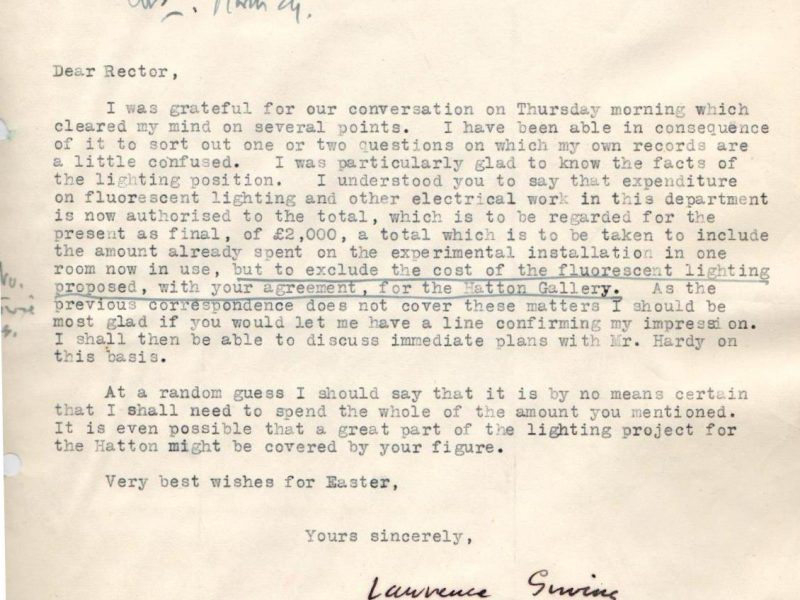
1948, Letter from Gowing to Rector
Lawrence Gowing had only just been appointed as Professor in the Fine Art Department when he took up this correspondence with the Rector of Kings College about the need for improvements in lighting in the Hatton Gallery and wider Department.
The Minutes of the Sub-faculty of fine art, architecture and town and country planning Committee note that on 23 April, 1948 Professor Gowing attended his first meeting.
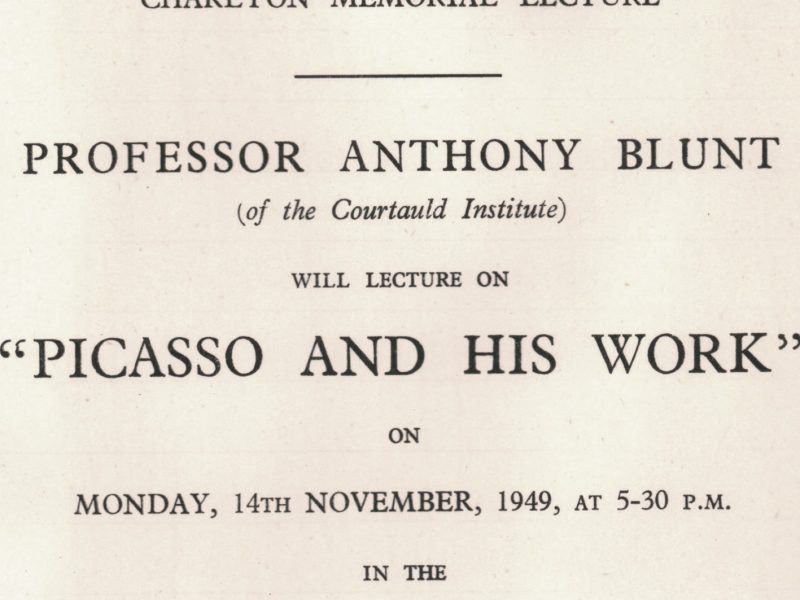
1949, Charlton Lecture
Gowing used his connections and influence across the art world to get the most eminent academics to deliver the annual Charlton Lecture, in 1949 Anthony Blunt, by then not only Surveyor of the King’s Pictures, but also Professor of the History of Art at the University of London, and the director of the Courtauld Institute of Art, spoke about Picasso.
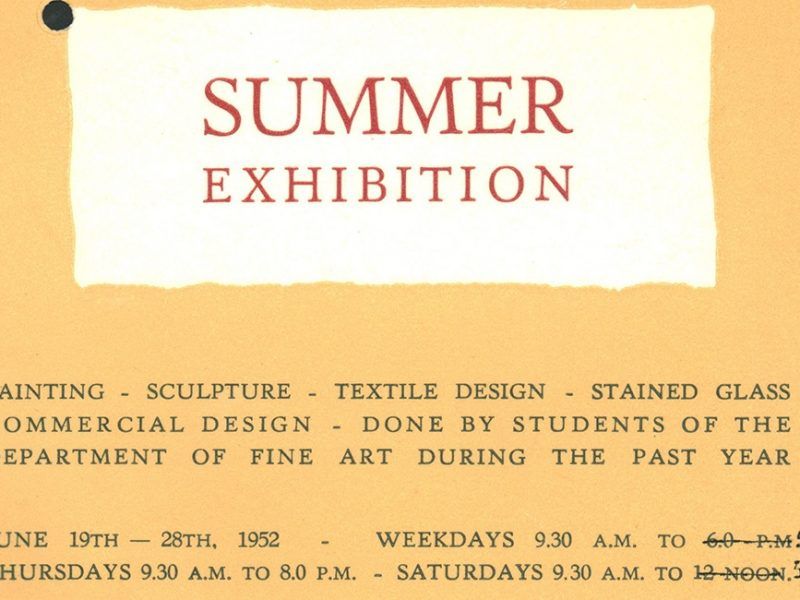
No Featured Staff & Students
There are no featured Staff & Students available in 1950. However, please see the 1952 archive to explore further Staff & Students.

No Featured Staff & Students
There are no featured Staff & Students available in 1951. However, please see the 1952 archive to explore further Staff & Students.

1952, Student Summer Exhibition, private view card
During this period the student Summer Exhibition brought together work from all disciplines and stages of the course.
Student alumnus Derek Carruthers (1953-57) describes the entrance interview.
https://soundcloud.com/user-578681853/derek-carruthers-003
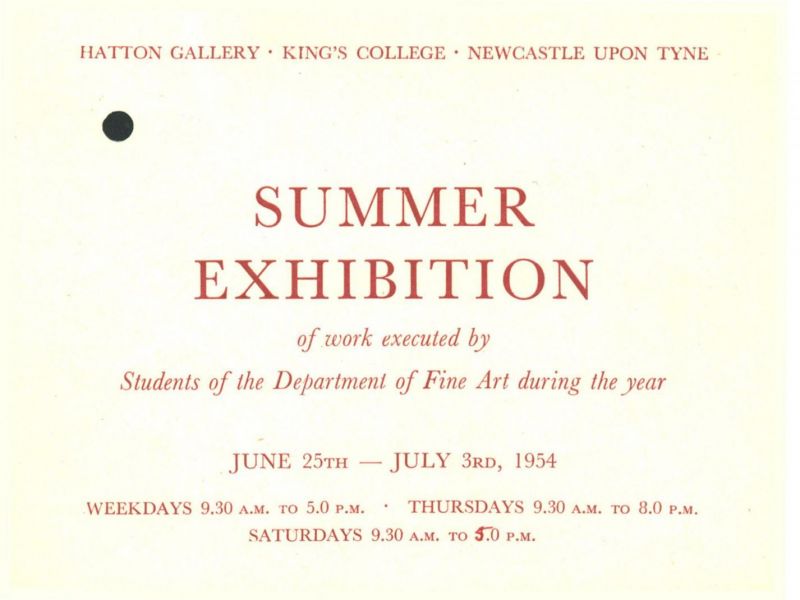
No Featured Staff & Students
There are no featured Staff & Students available in 1953. However, please see the 1954 archive to explore further Staff & Students.

1954, Student Summer Exhibition, private view card
The invitation for the press to attend the 1954 Summer Exhibition was obviously very successful with a number of reviews appearing in the local press.
In 1954 the external examiners were Claude Rogers and Edward Bawden.
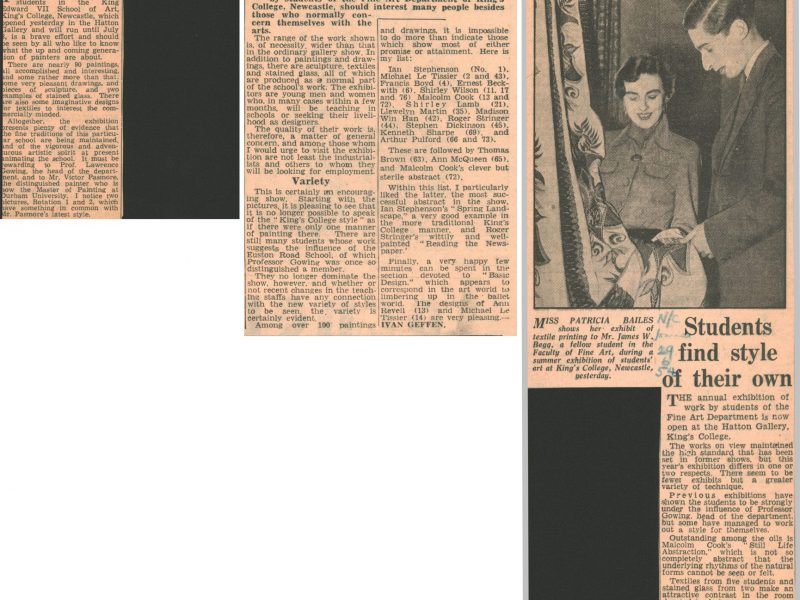
1954, Student Summer Exhibition, press reviews
These three local press reviews of the 1954 Summer Exhibition all mention the influence tutors such as Gowing and Pasmore (in his first year in the Department) might have on stylistic trends amongst the students, and also identify definite signs of change.
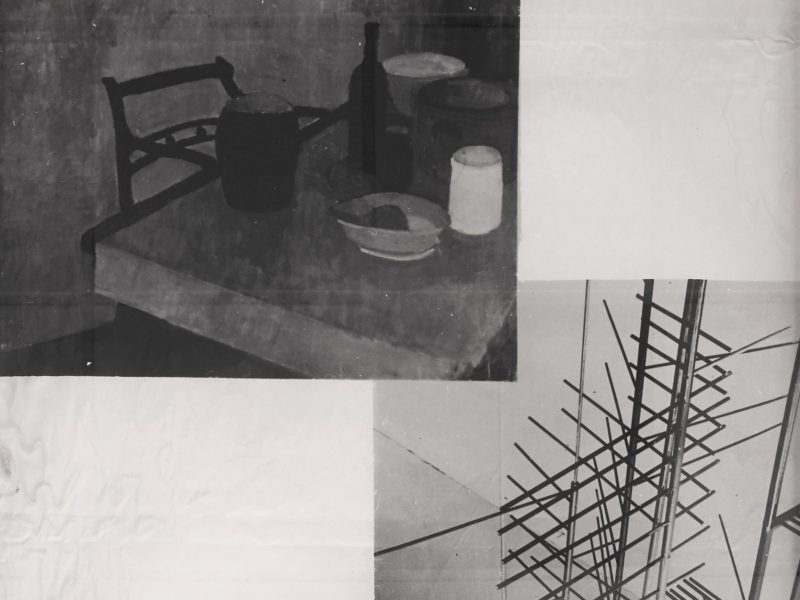
1955, Student Summer Exhibition, poster
It is not clear whether at the time this poster for the 1955 Summer Exhibition was designed to so consciously contrast the old with the new, but certainly in retrospect, it would appear after the first full year of the new ‘basic course’ a sharp contrast was being made between the ‘Euston Road’ type realism of Gowing and de Grey and radical abstraction of Pasmore.
In 1955 the external examiners were William Coldstream and Wyndham Godden.
Alumni, Kate Stephenson, Elspeth Reynolds and Rosemary Saunders talk about their experience of the Basic Course.
https://soundcloud.com/user-578681853/kate-elspeth-rosemary
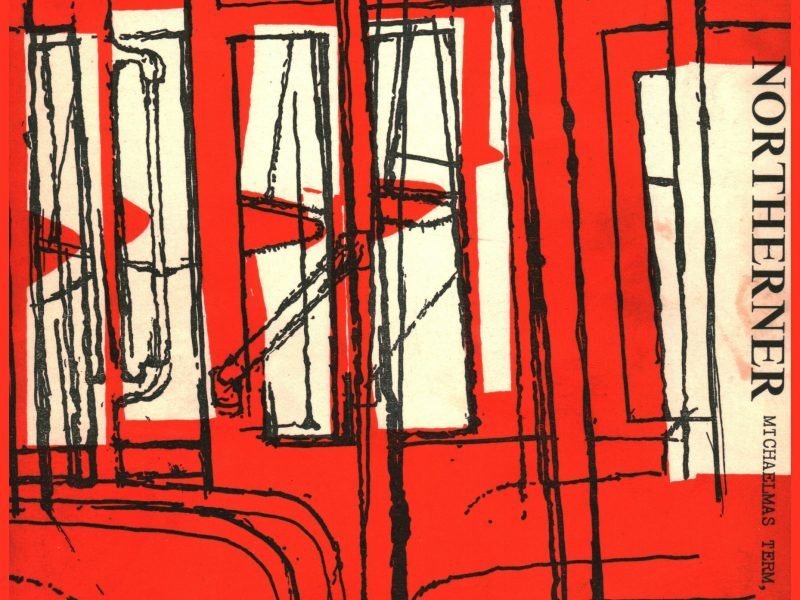
1955, The Northerner magazine
The Northerner was a campus wide, student led magazine, this cover was designed by Ian Stephenson, then in his year as a Hatton scholar, towards the end of his degree.
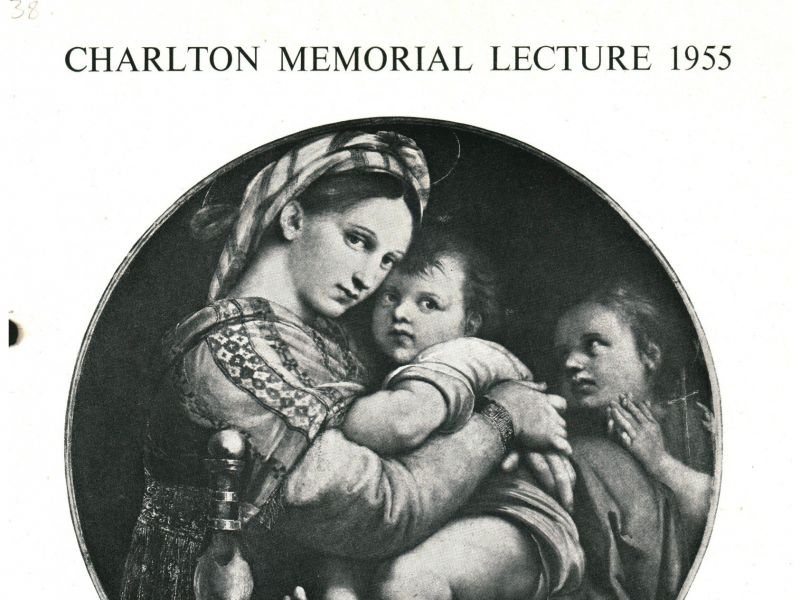
1955, Charlton Memorial Lecture
During the 1950s the annual Charlton Lecture, rather than being a broad survey of a particular topic, was generally focused on a single work of art. In 1955, five years after the publication of his ‘The Story of Art’, Ernst Gombrich delivered a lecture on Raphael’s Madonna della Sedia from the Palazzo Pitti collection in Florence.
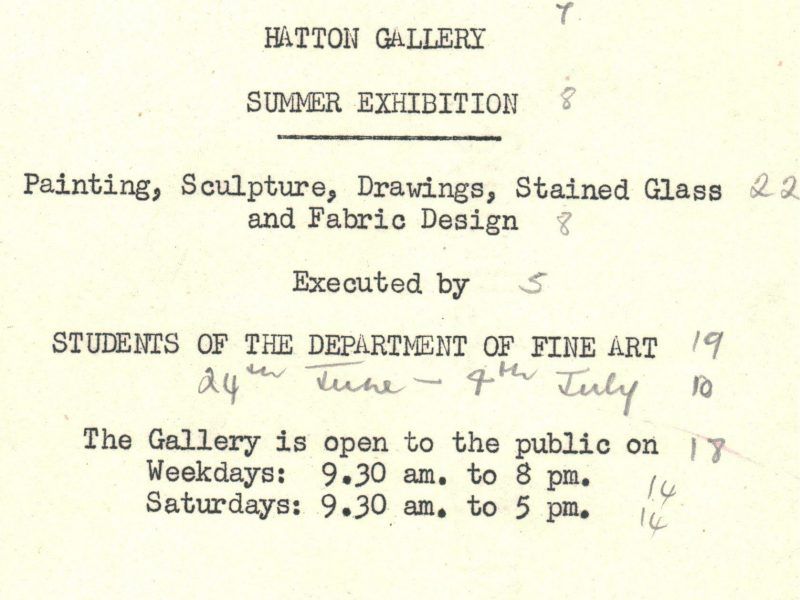
1956, Student Summer Exhibition, flyer
Annotated flyer / press release for the 1956 Summer Exhibition, the significance of the pencil figures appears to relate to the length of each line of text.
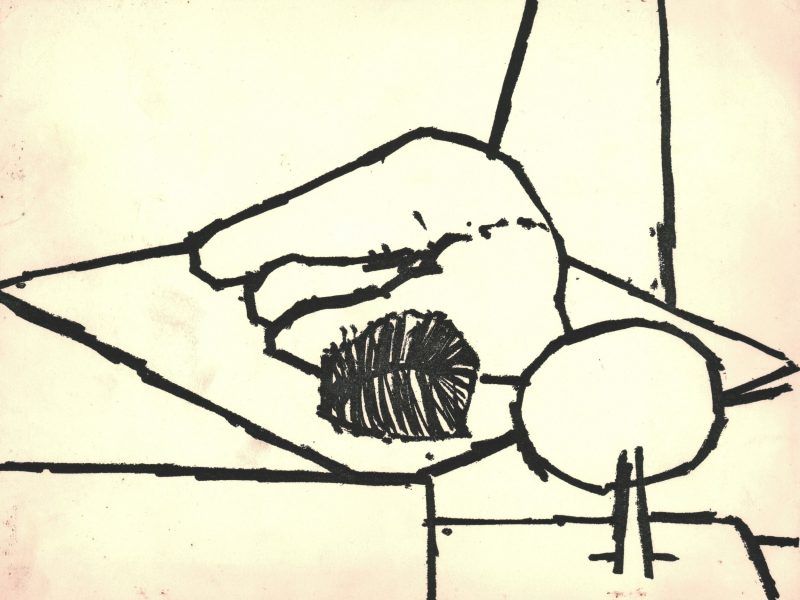
1956, Student Summer Exhibition, catalogue
Cover of the 1956 student Summer Exhibition catalogue, designed by Rosemary Saunders using the then new and exciting medium of felt-tip pen.
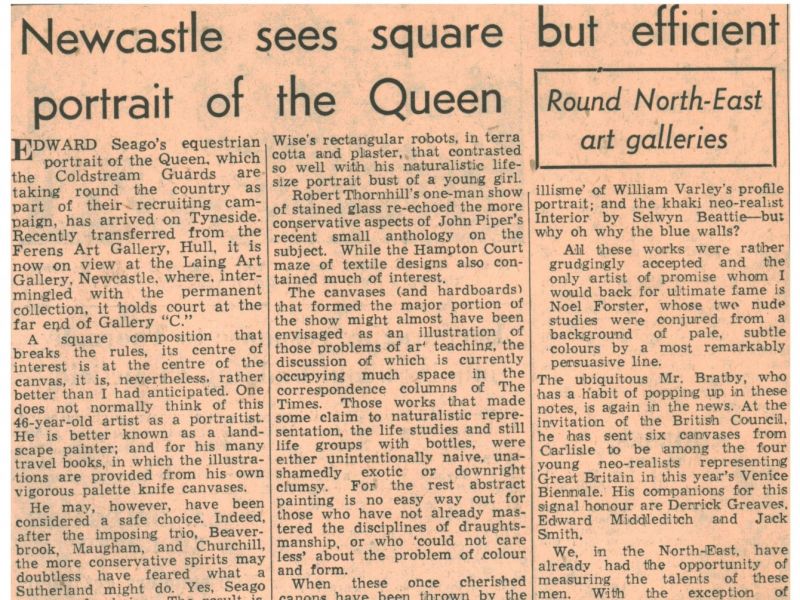
1956, Student Summer Exhibition, press cutting
Following the paragraphs on Edward Seago’s ‘square but efficient’ portrait of the Queen on show at the Laing Art Gallery, are W.E. Johnson’s thoughts on the 1956 student Summer Exhibition, where he finds himself at a loss at the quantity and quality of the many abstract paintings.
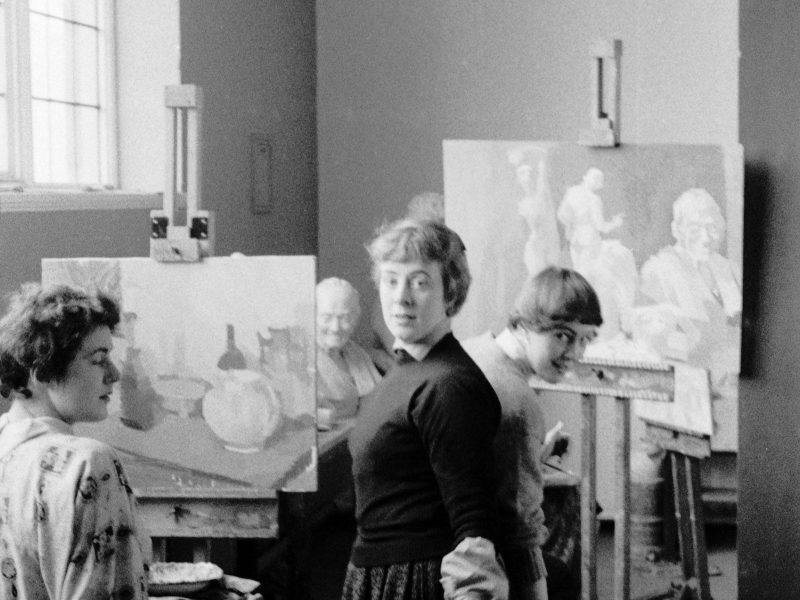
1956, studio photograph
This photograph from c.1956 shows that although Pasmore and Hamilton’s ‘basic course’ was underway and being taught to First Year students, more traditional painting from still life continued to be available and actively pursued.
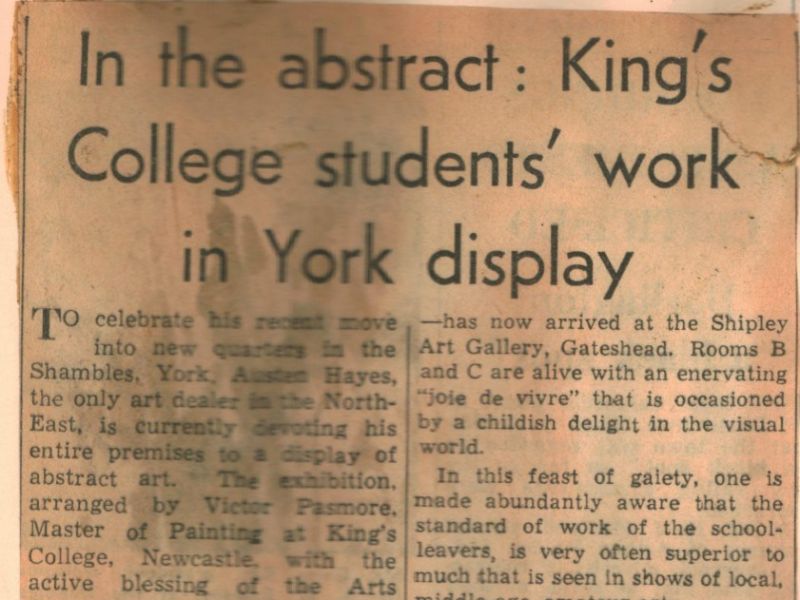
1956, Pasmore & students exhibition, press cutting
In November 1956 Pasmore arranged an exhibition of contemporary abstract artists in a commercial gallery (Austen Hayes) in York, opened by Herbert Read, it included Kenneth and Mary Martin, Terry Frost, as well as Pasmore himself and some of his current students. The exhibition was described here by W.E. Johnson as ‘a supreme vindication of the work of a number of the students of the Department of Fine Arts, Kings College, Newcastle.’
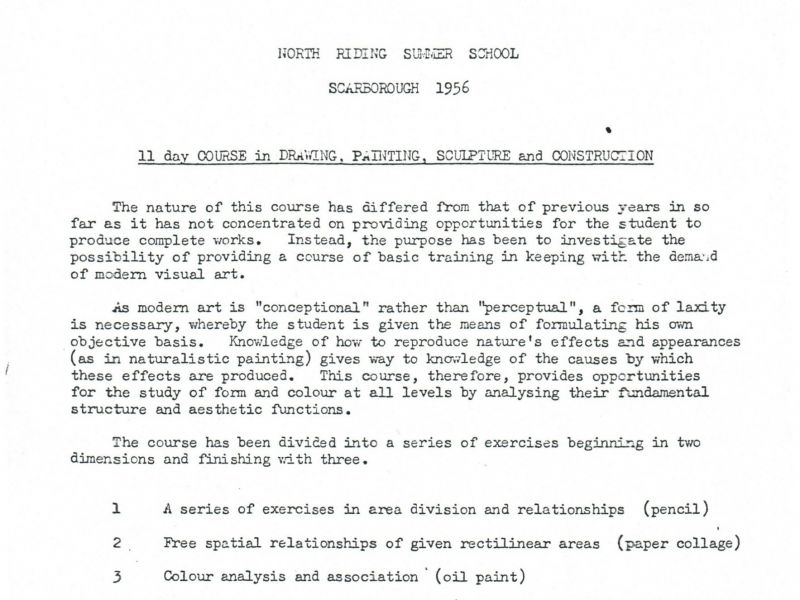
1956, Scarborough Summer School
The course outline and list of exercises for the 11-day 1956 Scarborough Summer School for teachers, where Wendy & Victor Pasmore, Harry Thubron and Tom Hudson discussed, honed and passed on their ideas for the development of a ‘basic course’ in art education. They explained that the course ‘provides opportunities for the study of form and colour at all levels by analysing their fundamental structure and aesthetic functions.’
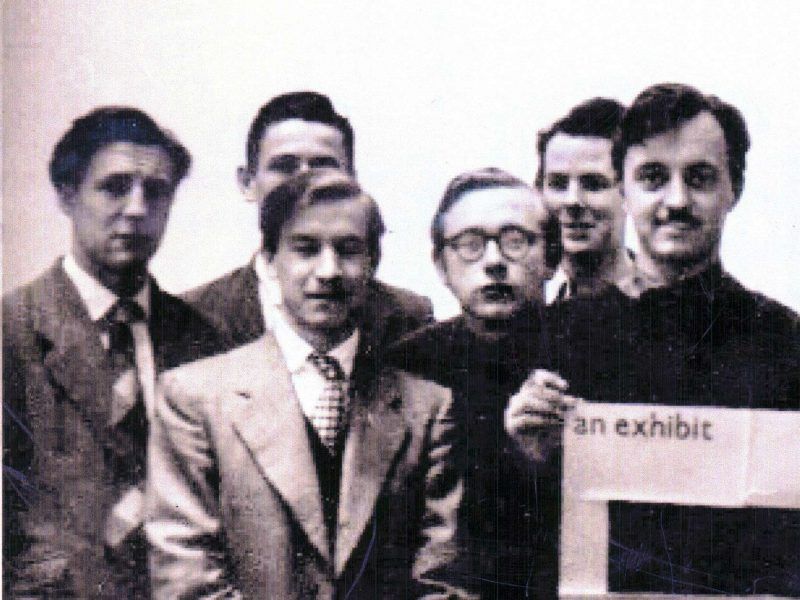
1957, an Exhibit
Derek Carruthers seen holding the poster for An Exhibit alongside a group of fellow students.
Student alumnus Matt Rugg (1956-61) recalls An Exhibit.
https://soundcloud.com/user-578681853/matt-rugg-007
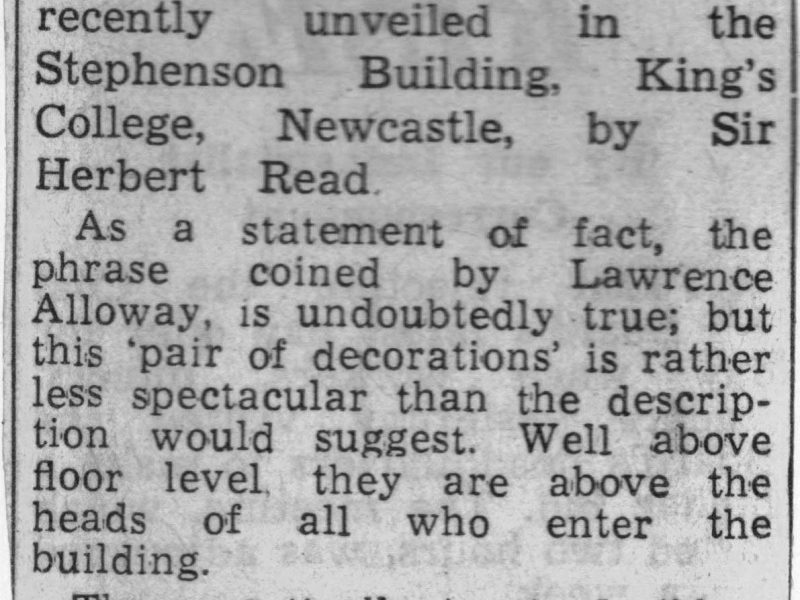
1957, press report on Pasmore’s murals
As reported here, in May 1957 Pasmore completed two large murals for the Stephenson engineering building on the Newcastle campus, unveiled by Herbert Read. This event was accompanied by an exhibition in the Hatton titled ‘Basic Form and Colour’, described by W.E. Johnson as an attempt ‘to design an alphabet of visual ideas’.
Student alumnus Derek Carruthers (1953-57) describes Pasmore’s views on art and architecture.
https://soundcloud.com/user-578681853/derek-carruthers-007
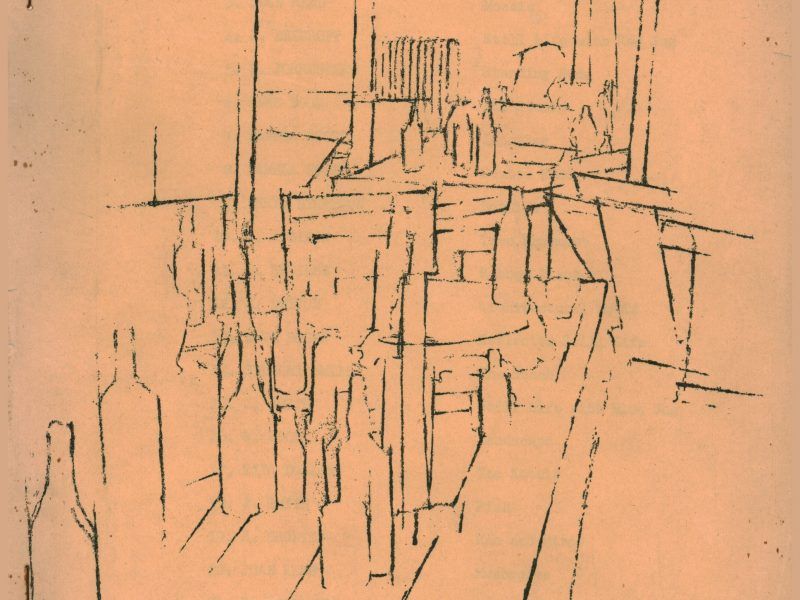
1957, Student Summer Exhibition, catalogue
The cover of the 1957 Student Summer Exhibition catalogue by Kathleen Brown (Kate Stephenson) demonstrates that drawing from life, though with a difference, remained an important part of the course.
In 1957 the external examiners were William Coldstream and John Piper.
Student alumni Matt Rugg (1956-61) and Pat Kremer (1957-61) recall Ian Stephenson’s influence.
https://soundcloud.com/user-578681853/sets/matt-rugg
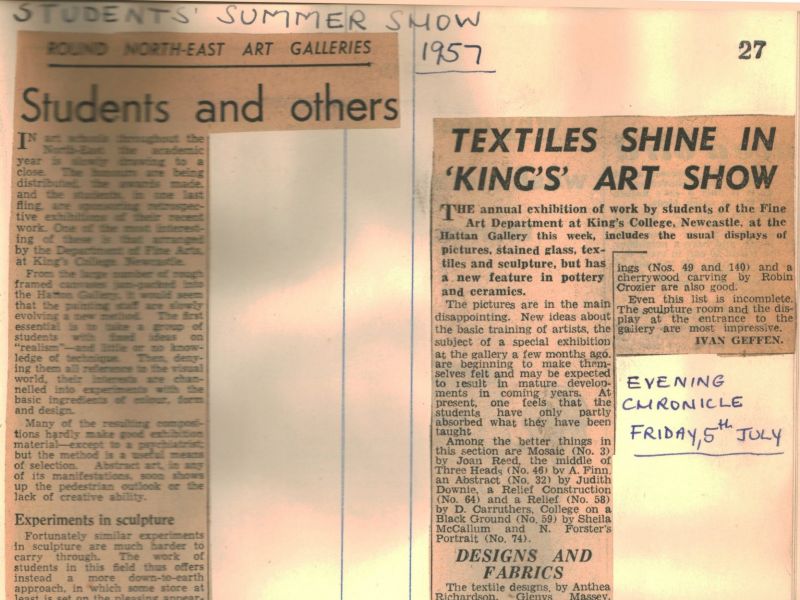
1957, Student Summer Exhibition, press reviews
In these reviews W.E Johnson and Ivan Geffen both pick up on the possible difficulties of students, and particularly painters, of adapting to the new ‘basic course’. Johnson writes of students denied all reference to the visual world and ‘channelled into experiments with the basic ingredients of colour form and design’, while Geffen felt that ‘at present one feels that the students have only partly absorbed what they have been taught.’
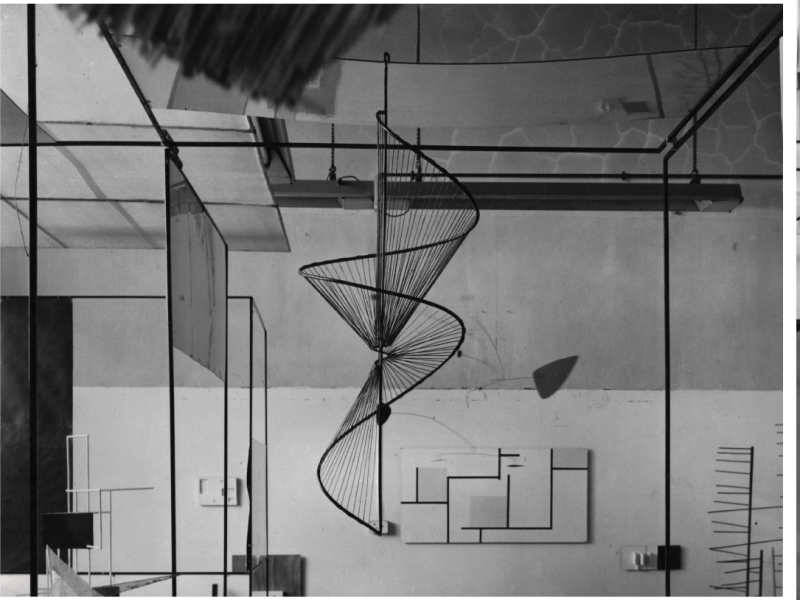
1957, ‘Room 2’ photograph
These two photographs show a display of students’ works in ‘Room 2’. The ‘Room 2’ group at this time was made up of students apparently favoured by Pasmore and making works that adhered to his abstract leanings. Prominent is Derek Carruthers’ spiral mobile that Pasmore had included in the 1956 Abstracts exhibition. The metal framework used for Hamilton’s Man, Machine and Motion exhibition can be seen here being enterprisingly re-used.
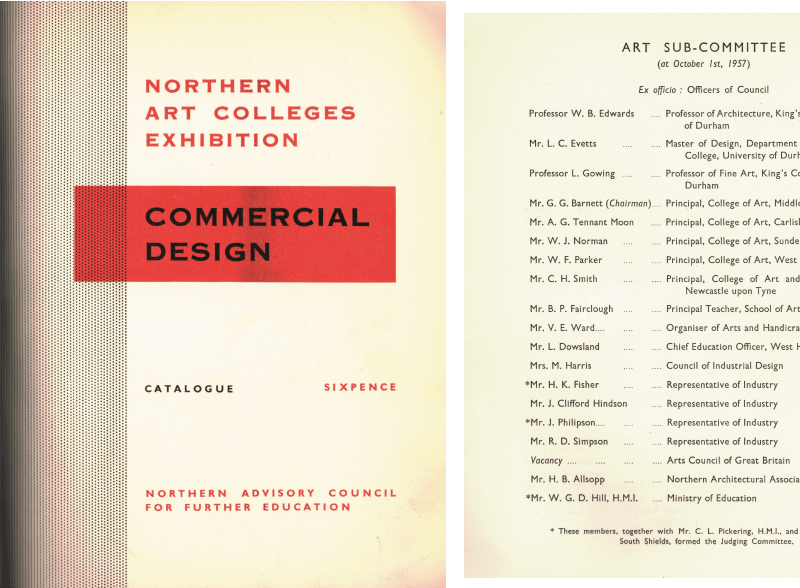
1957, Commercial Design exhibition catalogue
As the reputation of the Kings’ College Fine Art Department developed through the 1950s staff became involved with various external organisations and initiatives. This catalogue of student work in Commercial Design from Northern Art Colleges was organised by the Northern Advisory Council for Further Education. On their Art Committee sat Lawrence Gowing and Leonard Evetts from the Fine Art Department as well as Professor of Architecture, W.B. Edwards.
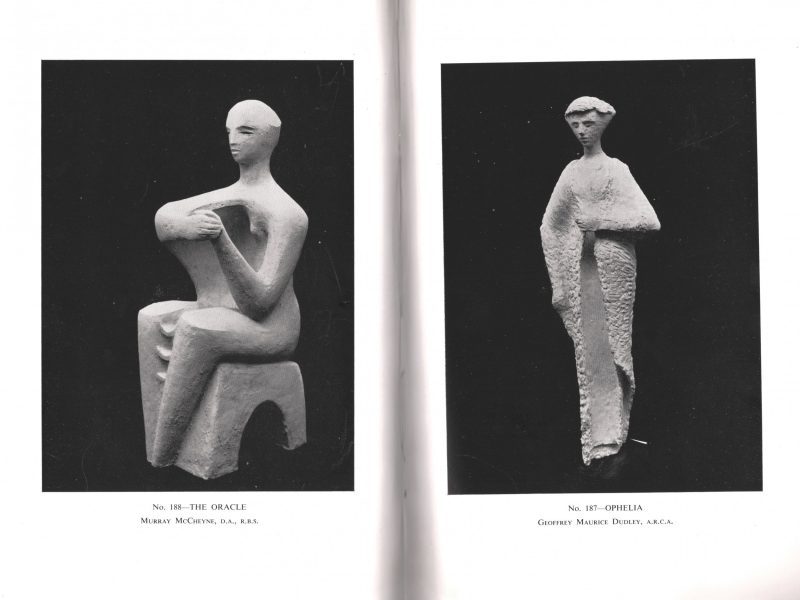
1957, catalogue for an ‘Exhibition of Works by Artists of the Northern Counties’
Staff and students were often included in exhibitions beyond the University, this spread showing works by sculpture tutors Murray McCheyne and Geoffrey Dudley is from the catalogue for an ‘Exhibition of Works by Artists of the Northern Counties’ held at the Laing Art Gallery. Leonard Evetts was also included, as well as students Scott Campbell, Noel Forster, Brian Sefton, Ronald Dutton and Robin Crozier.
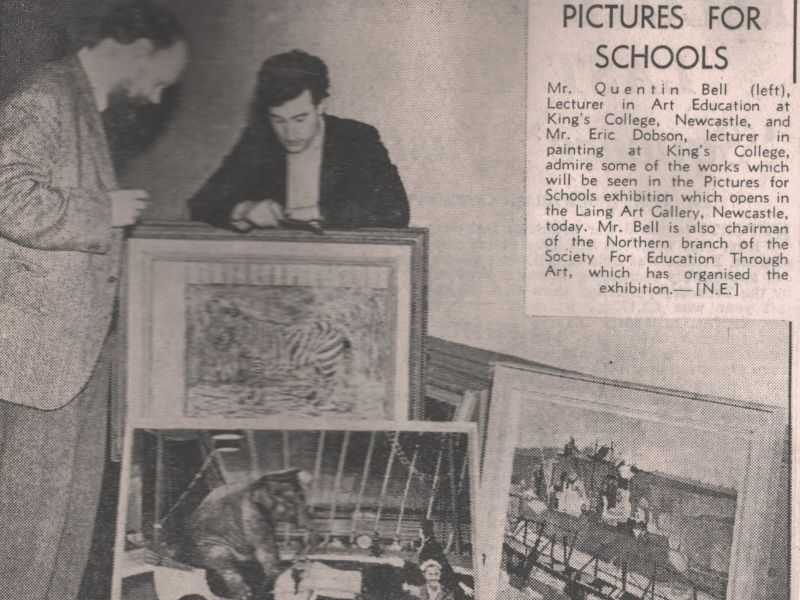
1957, staff press cutting
King’s College lecturers Quentin Bell and Eric Dobson are seen here at the Laing Art Gallery assisting with the Pictures for Schools exhibition held there.
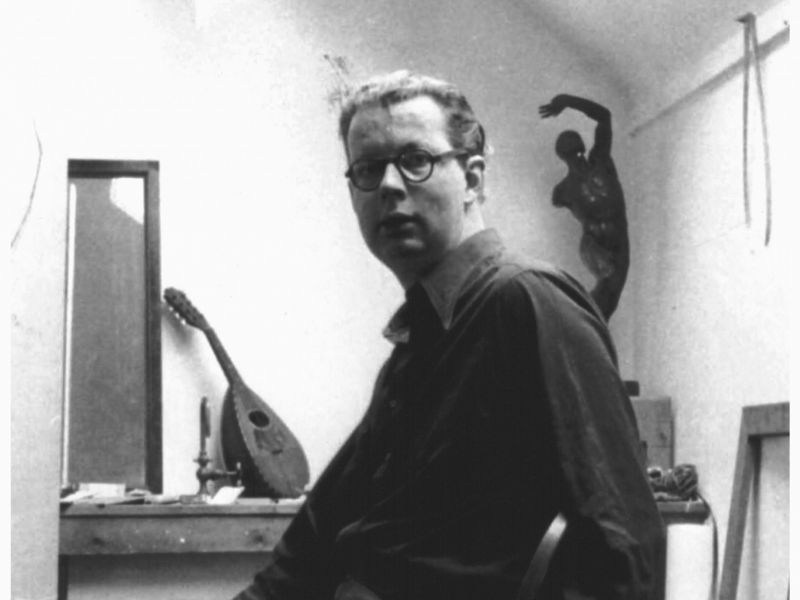
1957, Professor Lawrence Gowing, studio photograph
This photograph of Professor Lawrence Gowing taken in the studios in the Fine Art Department in 1957 appeared in the catalogue for his exhibition held in the Hatton Gallery in 1983. When in 1948 he was appointed as Professor of Fine Art at Kings College, he was only 30, four years later he was awarded a CBE and made a Trustee of the Tate Gallery.
Student alumna Mary Webb (1958-63) describes Gowing’s qualities.
https://soundcloud.com/user-578681853/mary-webb-008
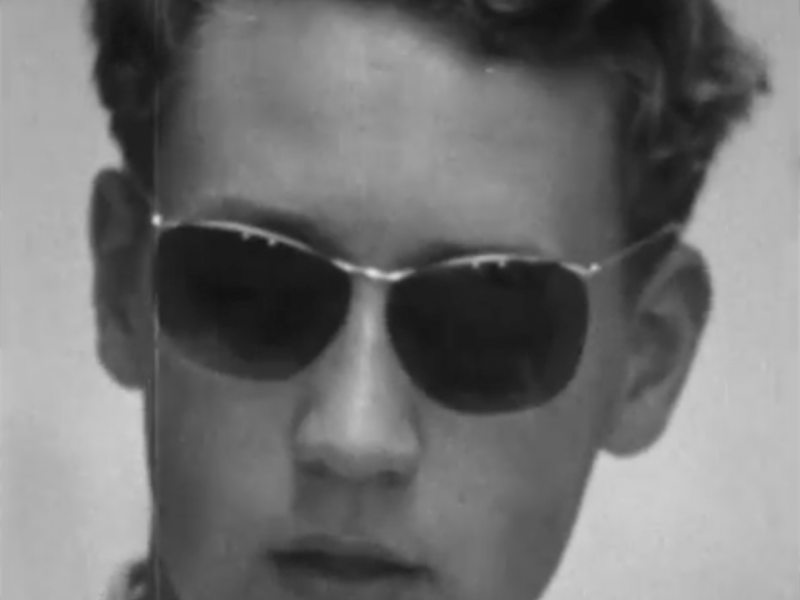
1958, Student Film
Filmed by student Michael Dawson towards the end of the term in 1958, this short piece of film really shows the fun and social side of life in the Fine Art Department at the time, with staff and students dancing and enjoying the music together on the Hatton Gallery’s roof and some orchestrated larking around in one of the Departmental studios.
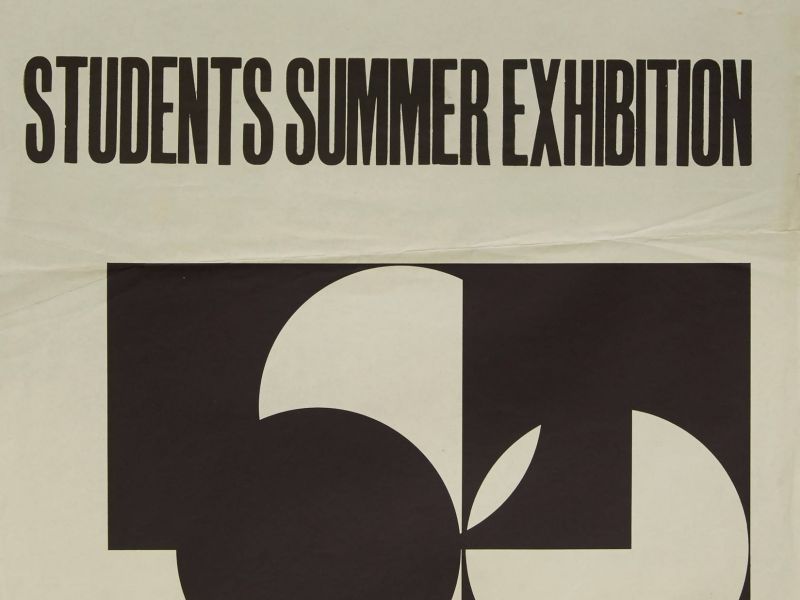
1958, Students Summer Exhibition, poster
The 1958 Summer Exhibition poster, and the catalogue cover which used a detail from the poster, look very much like an example of a ‘basic course’ exercise looking at the relationships of simple shapes and contrasting use of black and white.
In 1958 the external examiners were Claude Rogers and Bernard Meadows.
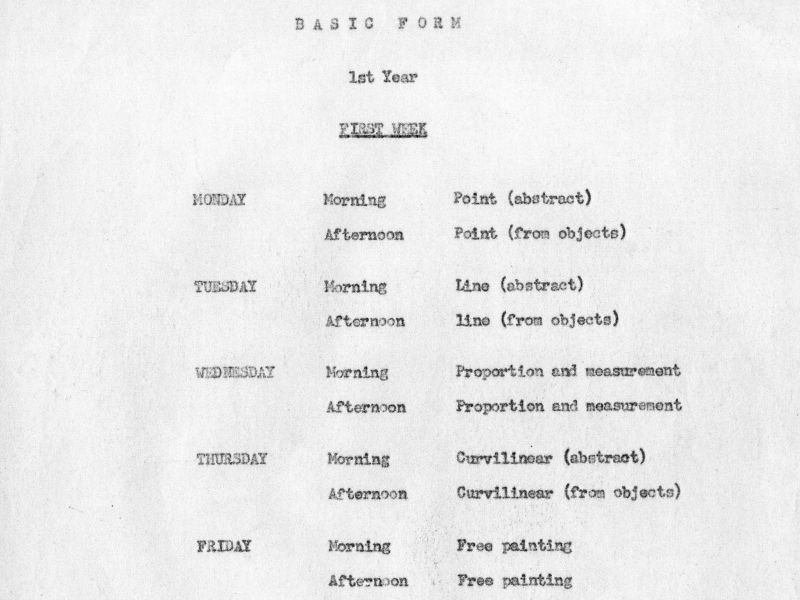
1958, first year course outline
This simple outline for the first week of the first year gives an idea of the concepts of ‘basic form’ which new students would be introduced to from the very start of the course.
Student alumni Mary Webb (1958-63) and Rose Frain (1958-62) describe their introduction to the Basic Course.
https://soundcloud.com/user-578681853/sets/1958-first-year-course-outline
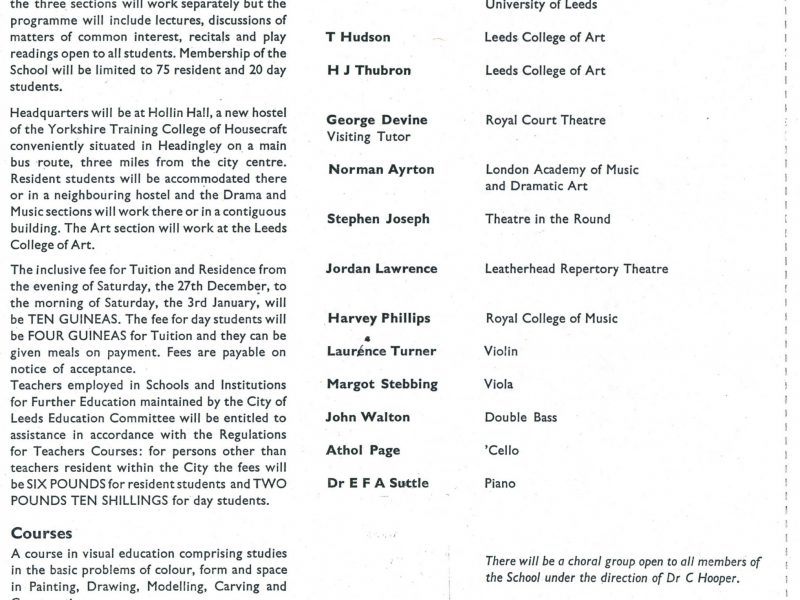
1958, Leeds Winter School, brochure
Similarly to the earlier Scarborough summer schools, this Winter School held in Leeds was intended to develop teachers’ practical teaching skills through specialist courses on visual education, acting and producing and orchestral string playing. Working on the Art Section were the originators of Basic Design, Victor & Wendy Pasmore, Harry Thubron and Tom Hudson, as well as sculptor Hubert Dalwood, teaching a course ‘comprising studies in the basic problems of colour, form and space…’
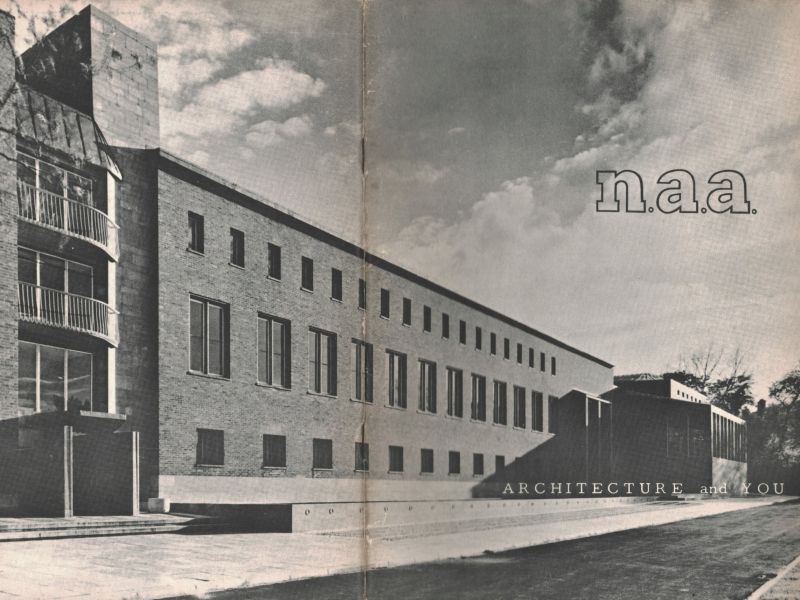
1958, ‘Architecture and You’, exhibition catalogue
King’s College staff were involved though committees and as advisors in the wider cultural life of the region in a variety of ways. The catalogue for this Northern Architectural Association exhibition ‘Architecture and You’ at the Laing Art Gallery was produced at King’s College and the Committee was chaired by Professor of Architecture W.B Edwards. Fine Art staff Murray McCheyne, Geoffrey Dudley and Leonard Evetts are also thanked for their ‘generous assistance’.
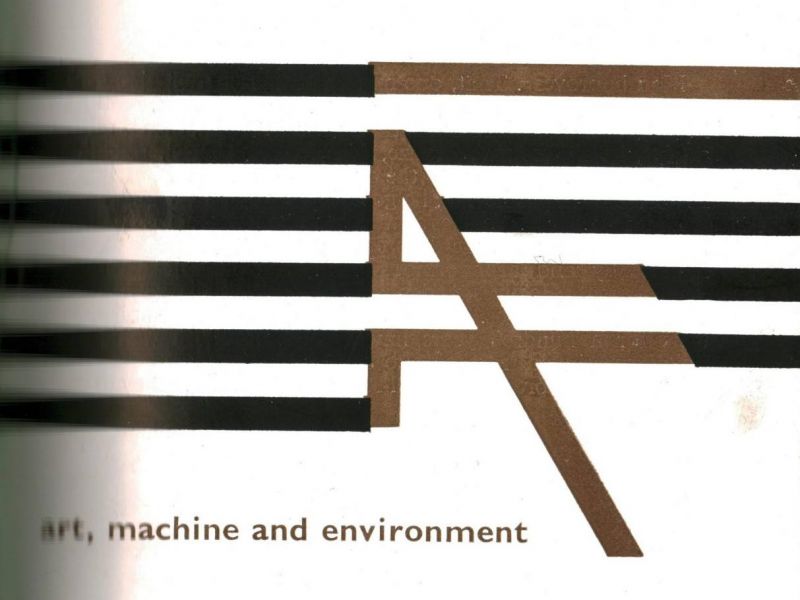
1958, Art, Machine and Environment, private view card
The private view card for Art, Machine and Environment indicates that Pasmore and Hamilton were the advisors to the organising committee, which included current students in the Fine Art Department Terry Marner and Roy Ascott.
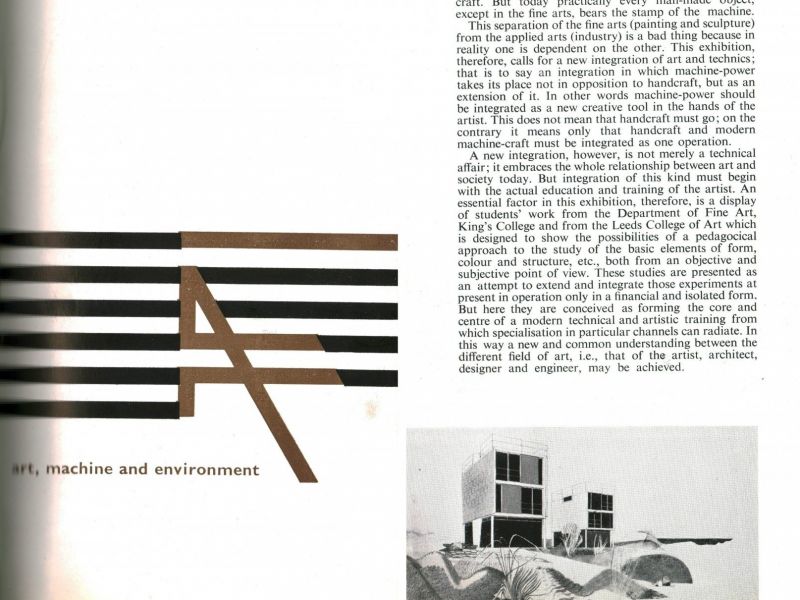
1958, Art, Machine and Environment, catalogue
The Art, Machine and Environment exhibition held at the Laing Art Gallery was very much a product of the Fine Art Department at King’s College. The catalogue featured a detailed ‘Forward’ from Pasmore where he calls for an integration of art, machine and handcrafts with society as a whole. He identifies as central to this ‘new integration’ the education of artists through ‘a pedagogical approach to the study of the basic elements of form, colour, structure etc., from an objective and subjective point of view’.
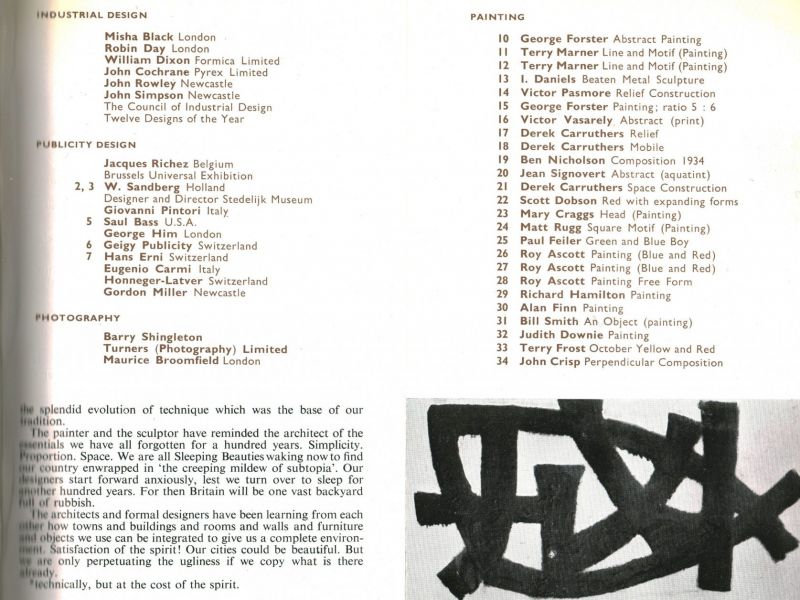
1958, Art, Machine and Environment, catalogue
The catalogue list of works in Art, Machine and Environment reveals a fascinating range of new art, design and architecture, relating to Pasmore’s theme of ‘integration’ expressed both in his text and that of local Architectural firm Ryder & Yates. While many of the art examples come from the ‘centres’ of the ‘basic course’ – Newcastle and Leeds, the design pieces are drawn from an impressive range of national and international sources.
1959-68
Introduction
Pasmore and Hamilton worked to develop a new ‘Basic Course’ for first year students, aimed at encouraging them experiment with the fundamental principles of line, shape, colour and form.
Gowing focused on developing a permanent collection for the Department aimed at givng the students access to examples of Europen Art from the 14th-17th centuries, making full use of his art world connections to acquire some significant works.
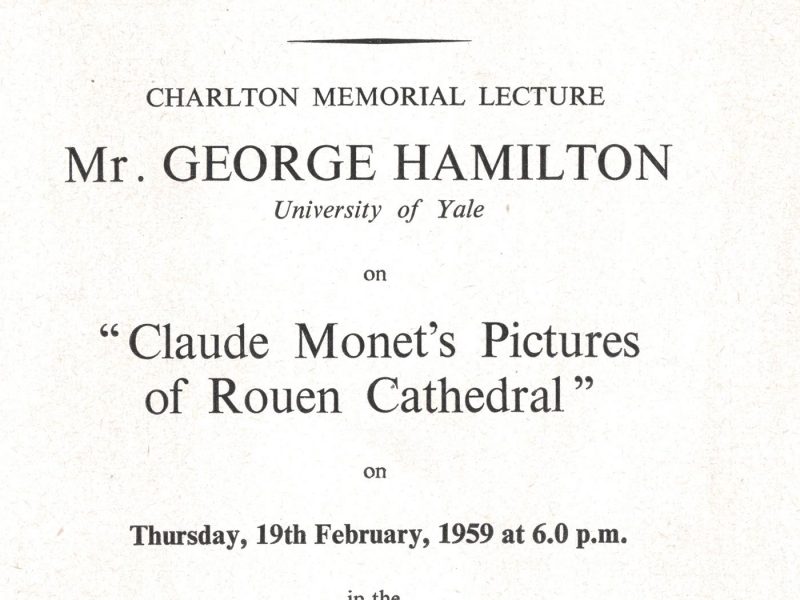
1959, Charlton Lecture
The 1958 Charlton Lecture was postponed from its usual November slot until the following February, presumably in order to allow George Heard Hamilton, Professor of Art History at Yale University (1936-1966) to deliver it.
Student alumna Mary Webb (1958-63) recalls Heard Hamilton’s visit.
https://soundcloud.com/user-578681853/mary-webb-004
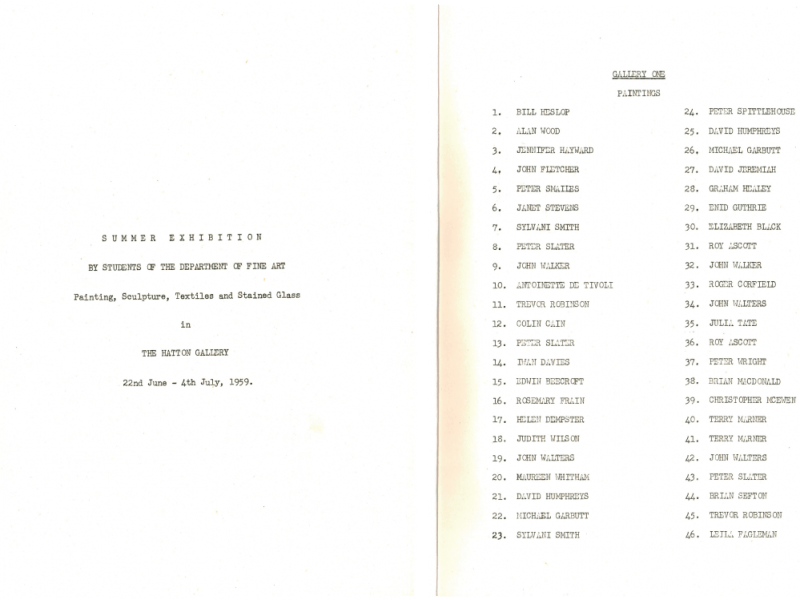
1959, Summer Exhibition, catalogue
The 1959 Summer Exhibition took place between the departure of Lawrence Gowing and appointment of Kenneth Rowntree as Professor. The catalogue lacked an illustrated cover, a simple type-written information deemed sufficient.
In 1959 the external examiners were Claude Rogers and Bernard Meadows.
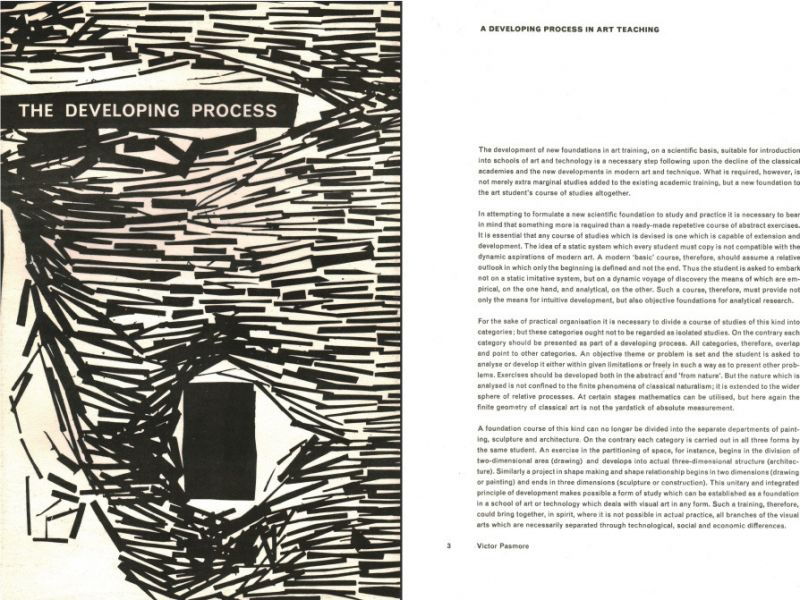
1959, The Developing Process, catalogue
The Developing Process was the first exhibition and publication project that summarised the development of the ‘basic course’ up to that point. Organised by Victor Pasmore and Richard Hamilton in Newcastle and Harry Thubron and Tom Hudson in Leeds, it was first shown at the ICA in London before touring the country.
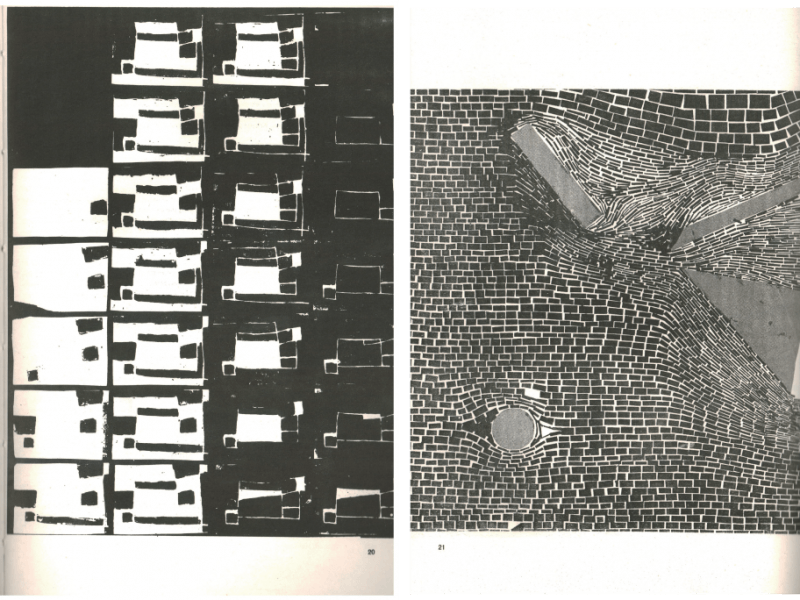
1959, The Developing Process, catalogue spread
Through texts by the 4 main organisers, as well as Alan Davie, Terry Frost, Geoffrey Dudley and J Ravetz, placed alongside (unattributed) examples of students’ work, the catalogue aimed to explain both the underlying principles of the ‘basic course’ and the intention behind specific exercises (as in in Hamilton’s text ‘Diagrammar’).
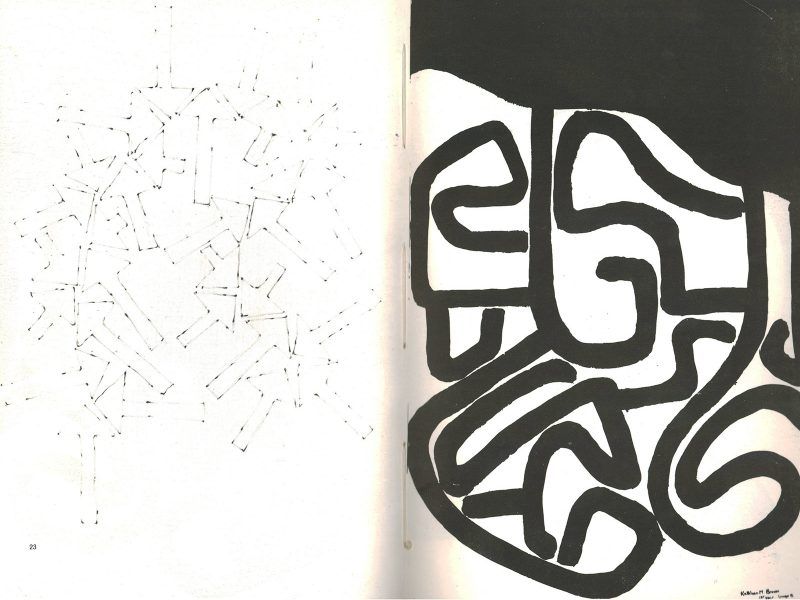
1959, The Developing Process, catalogue spread
Hamilton explained that the objective behind the exercise on the left was to represent ‘forces’ or a ‘kinetic situation’ through the use of signs. The image on the right by Kathleen Brown (Kate Stephenson) is described as a ‘space filling exercise’, with a specific aim of not repeating any particular ‘configurations’.
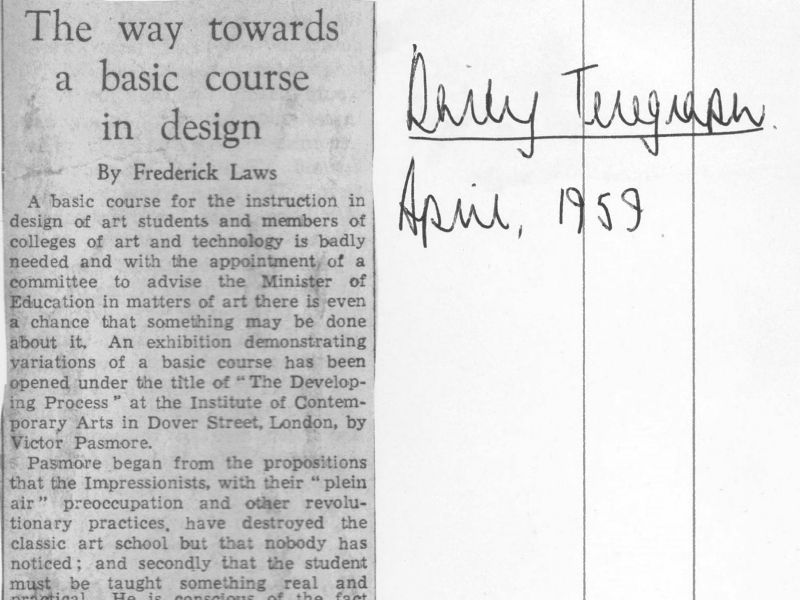
1959, The Developing Process, press review
Frederick Laws’ review in the Daily Telegraph of ‘The Developing Process’, which he largely attributes to Pasmore, is critical of the catalogue – ‘prettily printed,…a poor job of communication’. However he recognises the value of the ‘basic course’ which ‘as demonstrated is progressive, logical and practical…It is analytical and intellectual, but gives room for free creation.’
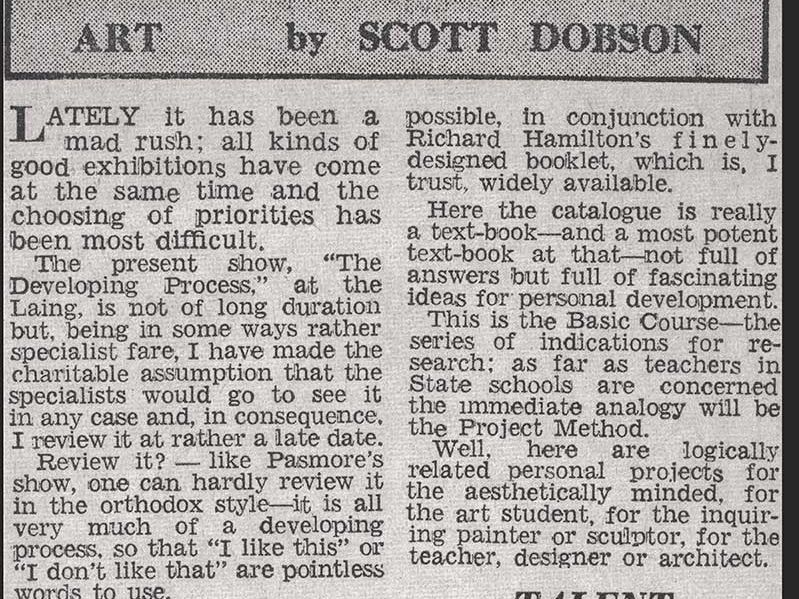
1959, The Developing Process, press review
Scott Dobson’s review from the Evening Chronicle of The Developing Process, as seen at the Laing Art Gallery in 1960, emphasises the source in nature of many of the principles of the ‘basic course’, but rather than the ‘literal motif’, ‘the underlying forms…and the world that microscope has made know to us’. Like many artists and writers at the time he identifies the risk of the ‘basic course’ leading to a specific style and students being led into imitating the work of their tutors.
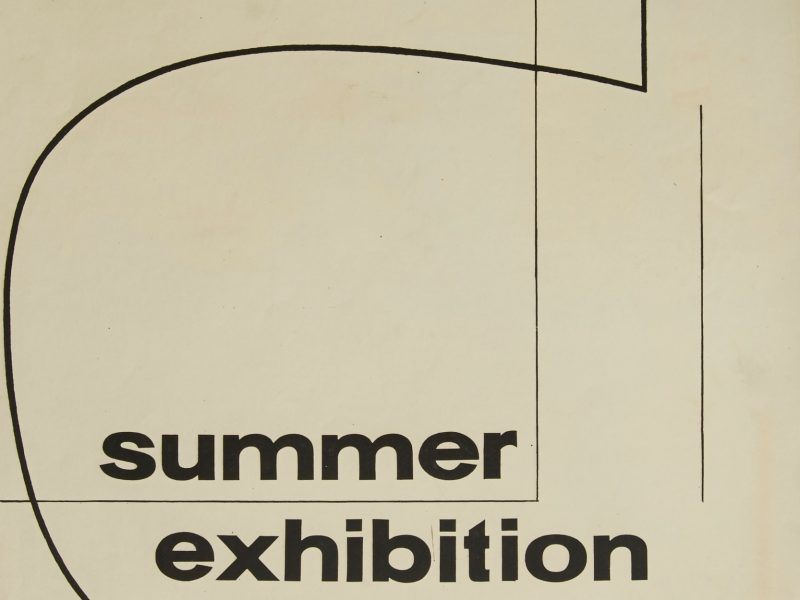
1960, Student Summer Exhibition, poster
The poster for the 1960 Student Summer Exhibition is one of the most minimal in its arrangement of just a few lines around the bare essential text.
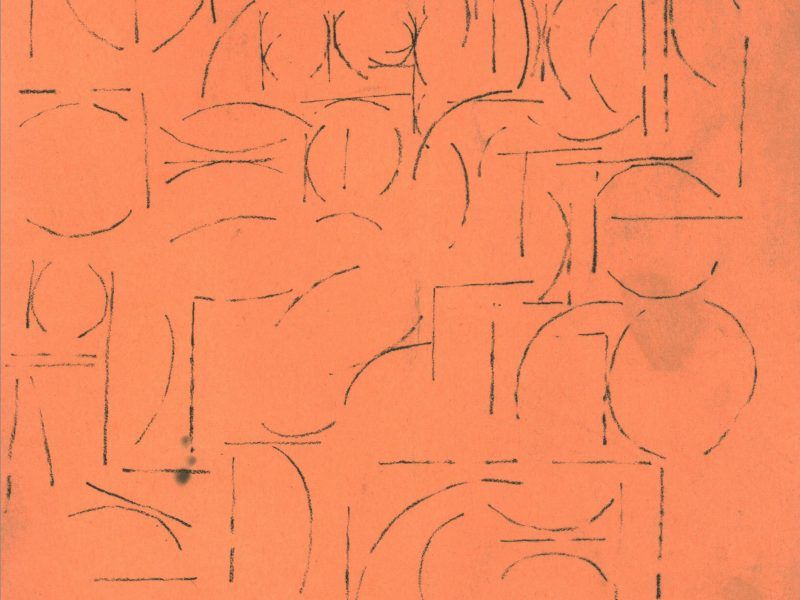
1960, Summer Exhibition, catalogue
The 1960 Summer Exhibition catalogue returned to having a student designed cover, like 1958 this looks like an example of a ‘basic course’ exercise.
In 1960 the external examiners were Claude Rogers and Willi Soukop.
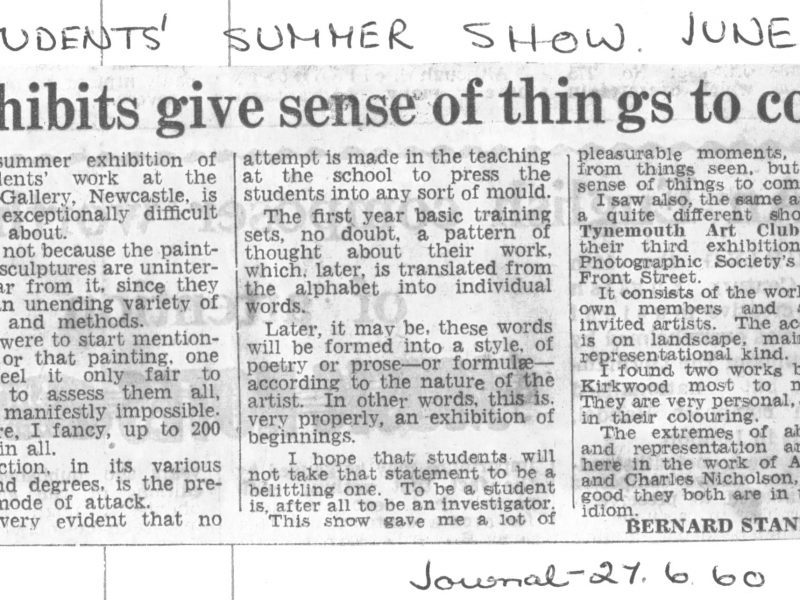
1960, Student Summer Exhibition, press review
Bernard Staniland’s positive review from The Journal.
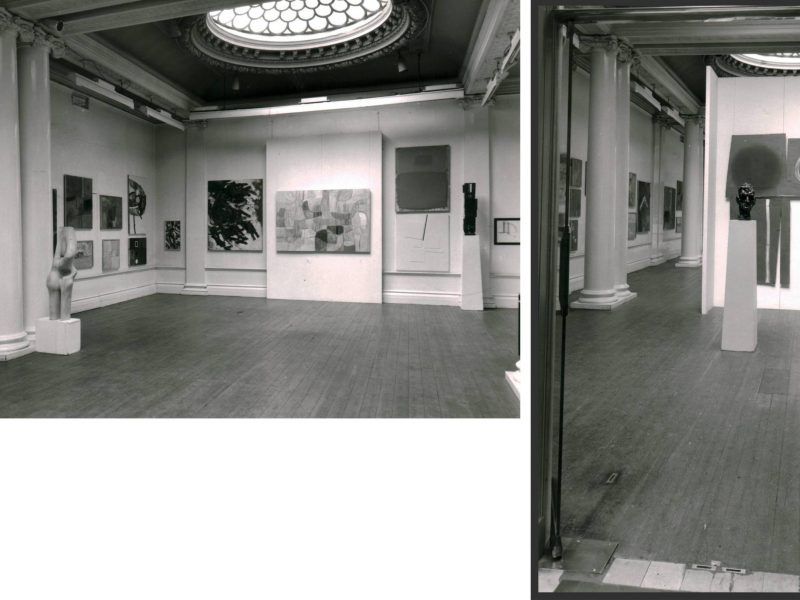
1960, Student Summer Exhibition, photograph
Installation views of the 1960 student exhibition in the Hatton Gallery. Like for much of the 1950s and 60s, the bay window at the end of the front gallery (to the left of the skylight in this picture) was blocked off with a false wall to increase the amount of hanging space.
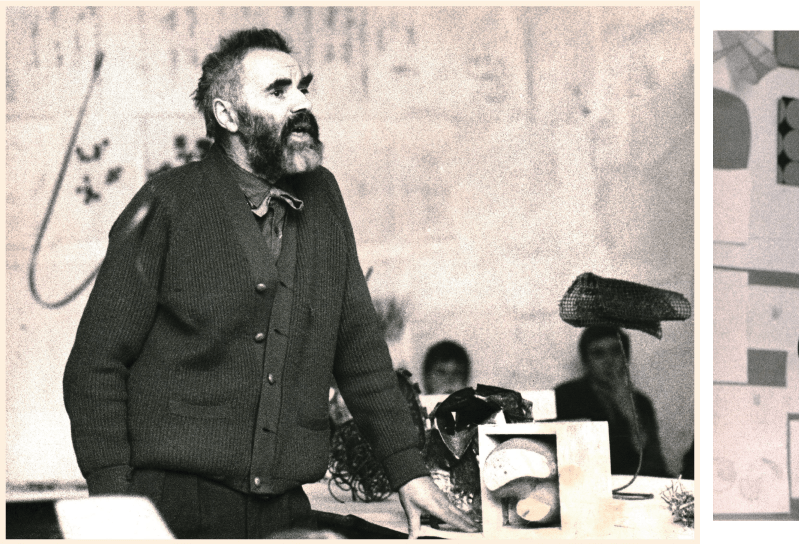
1960, Pasmore teaching, photograph
These images of Pasmore teaching in Newcastle demonstrate the importance that was placed on the sharing of the outcomes of undertaking specific exercises. Works were pinned up or displayed together on benches, and in the ensuing ‘crit’ tutors and students would discuss the various results.
(Photographs courtesy of the National Art Education Archive, Yorkshire Sculpture Park)
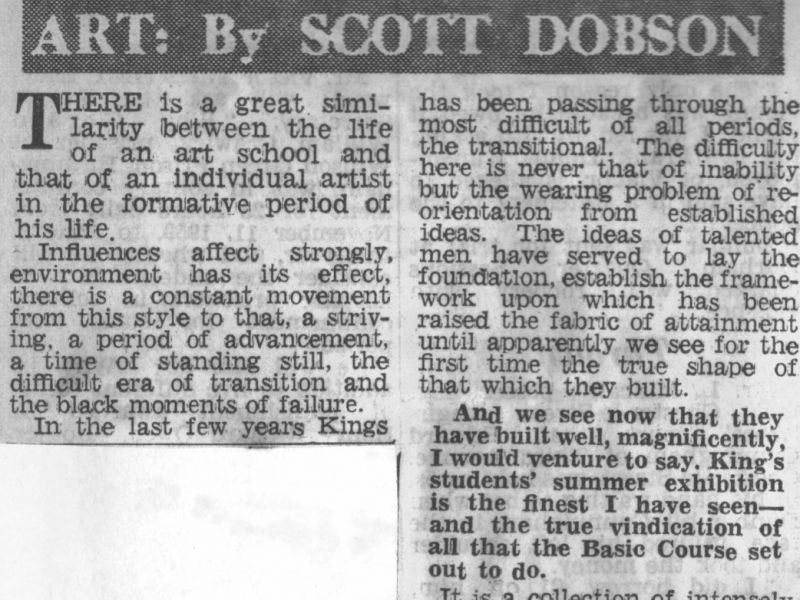
1960, Student Summer Exhibition, press review
Scott Dobson’s review was very positive, identifying an apparent coming of age of the new teaching methods employed by Pasmore and Hamilton. Dobson believed the exhibition to be ‘the finest I have seen – and the true vindication of all that the Basic Course set out to do.’
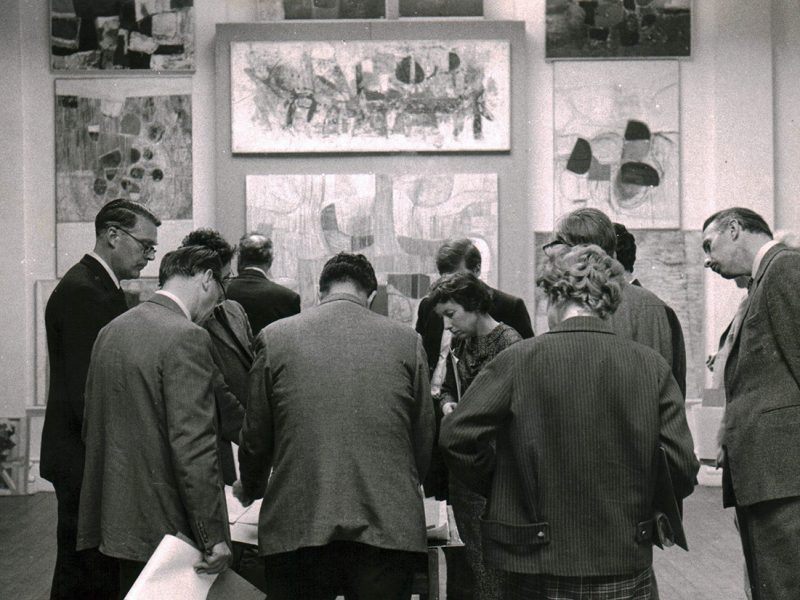
1961, degree show assessment, photograph
Staff gather during the final assessment process in the Hatton Gallery, Matt Rugg’s work appears in the background.
In 1961 the external examiners were Robert Adams and William Scott.
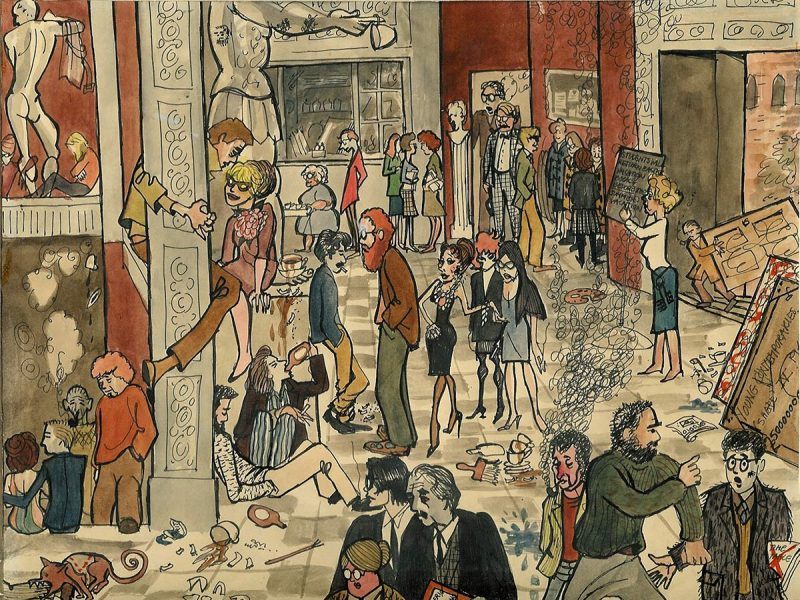
1961, Hillary Williams’ picture of the fine art department
This cartoon of the entrance hall to the King Edward VII building depicting staff and students of the time is a wonderful evocation of college life at the time. Drawn by Hillary Williams in 1961, among the identifiable figures are in the bottom right hand corner, l-r Eric Dobson, Victor Pasmore and Scott Campbell.
(image courtesy of Pat Kremer).
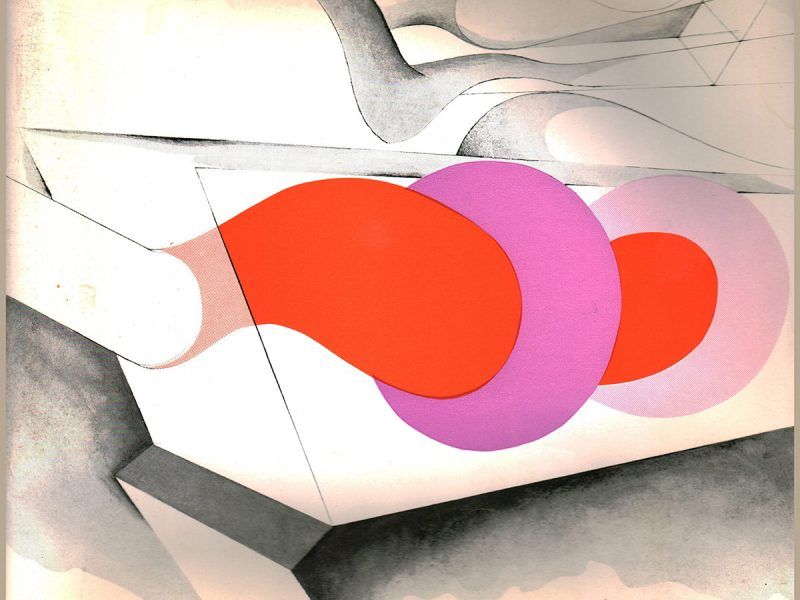
1961, The Northerner, magazine cover
The cover of the 1961 edition of the student-led magazine The Northerner was designed by Rita Donagh.
(image courtesy of Mary Webb)
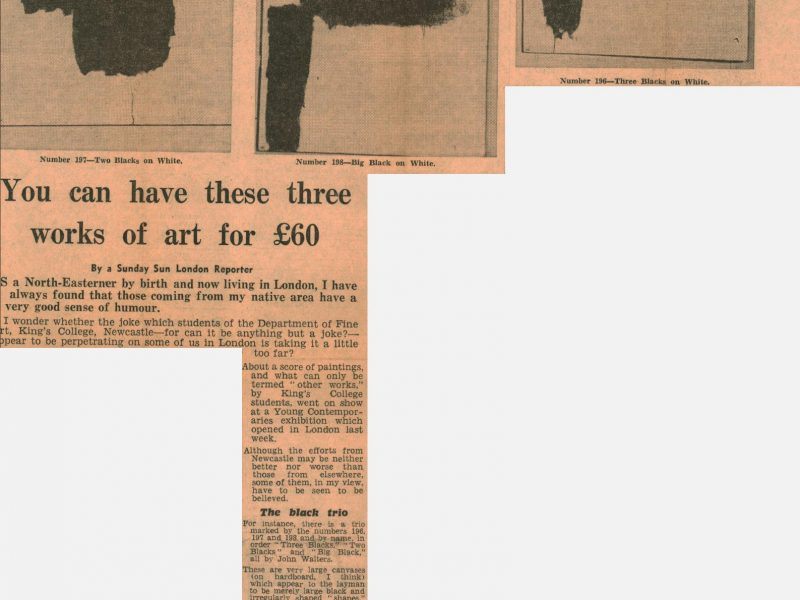
1961, Sunday Sun, press article
As would also be the case with the exhibition of students’ work in Oxford later in the year, when Newcastle students showed their work outside the local area, they still attracted considerable press attention. Here the Sunday Sun adopts an outraged ‘is this a joke’ position in relation to a ‘Young Contemporaries’ exhibition in London, focused on the price and materials used in the works. Three paintings by future BBC Radio 1 producer John Walters are reproduced and singled out for attention.
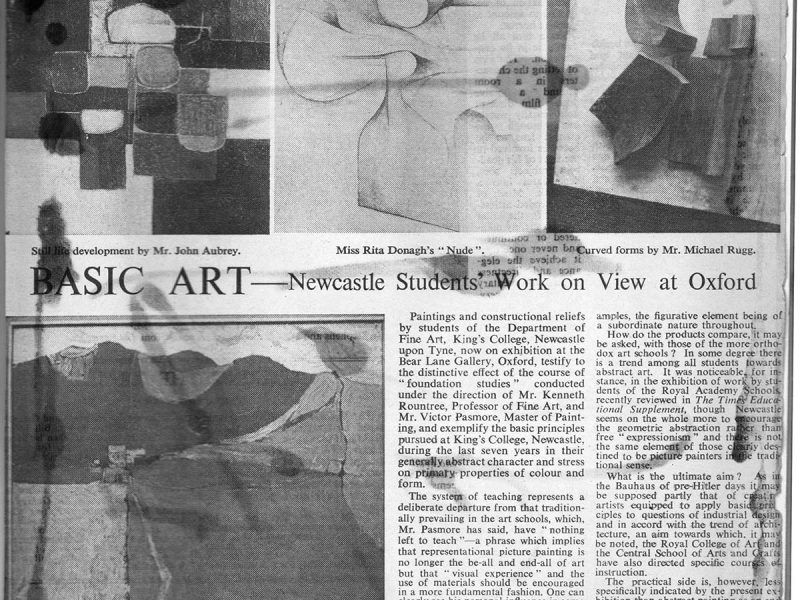
1961, Bear Lane Gallery exhibition, press review
The exhibition in Oxford in December 1961 of 37 works by students of the Fine Art Department attracted press that might not usually have covered such displays in Newcastle, including the Times Educational Supplement, Art News and the Guardian. The TES reproduced works by John Aubrey, Alexander Purves, Rita Donagh and Matt Rugg, the latter two also being singled out for mention in George Butcher’s article in the Guardian.
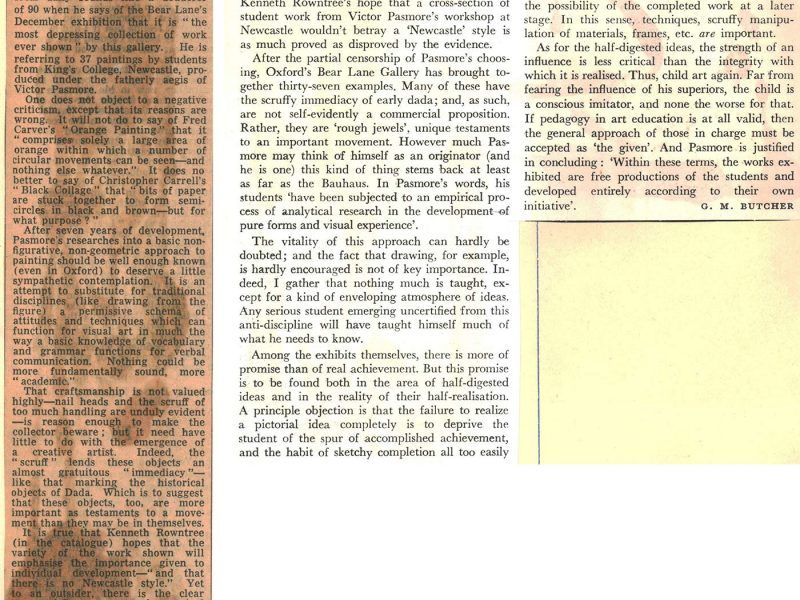
1961, Bear Lane Gallery exhibition, press reviews
Both these reviews of the exhibition at the Bear Lane Gallery, Oxford attempt to give a sense of what the ‘basic course’ under Pasmore involved, and while both identify a general scruffiness in these abstract experiments, they agree with the hope Rowntree stated in the catalogue, that the work didn’t all conform to a particular ‘Newcastle style’.
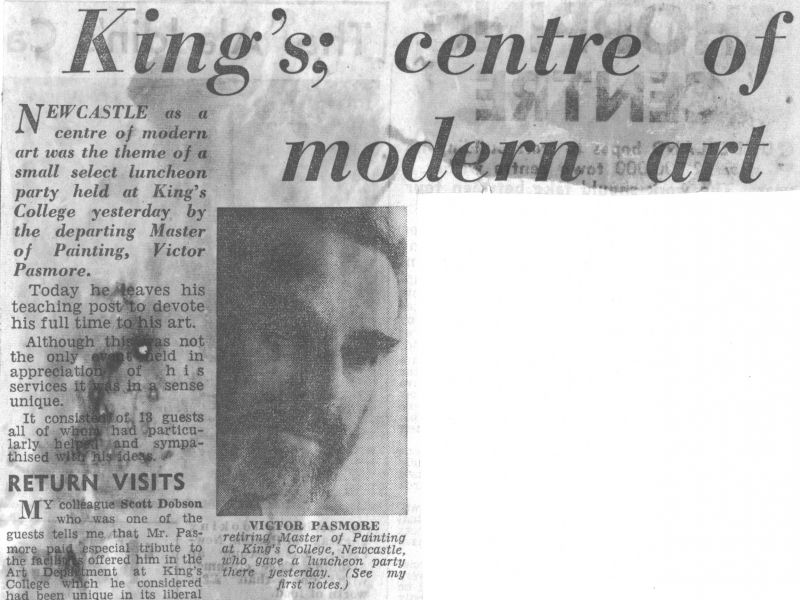
1961, Pasmore press article
This press article from early 1961 reports on a valedictory luncheon party to mark Pasmore’s departure from Newcastle. Having signed up with Marlborough Fine Art and exhibited in the British Pavilion at the Venice Biennale in 1960, he clearly thought it was time to focus full time on his non-teaching career.
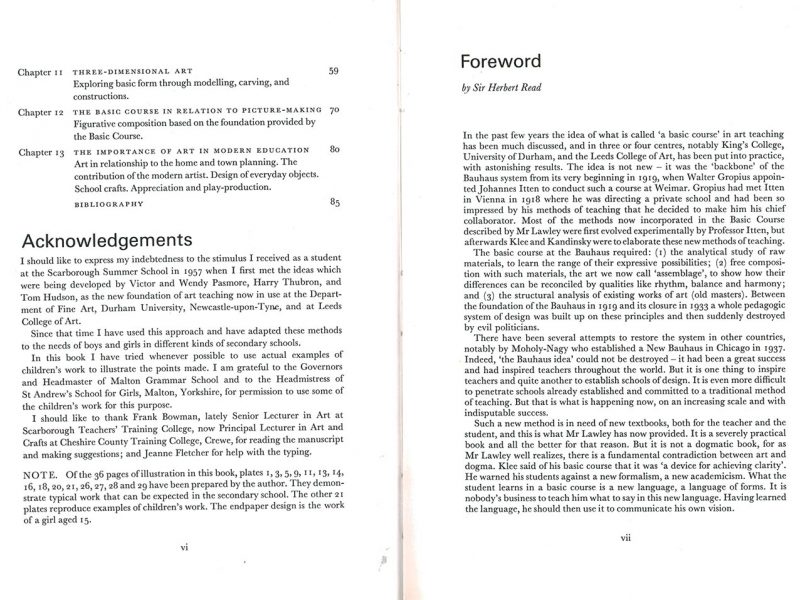
1962, Leslie Lawley’s ‘A Basic Course in Art’
Lawley particularly acknowledges the impact and stimulus of the 1957 Scarborough Summer School led by Victor & Wendy Pasmore, Harry Thubron and Tom Hudson. Sir Herbert Read’s Foreword notes that where a ‘basic course’ has been put into a practice is has achieved ‘astonishing results’. Warning against possible stylistic dogmatism, he concludes ‘What the student learns in a basic course is a new language, a language of forms. It is nobody’s business to teach him what to say in this new language’.
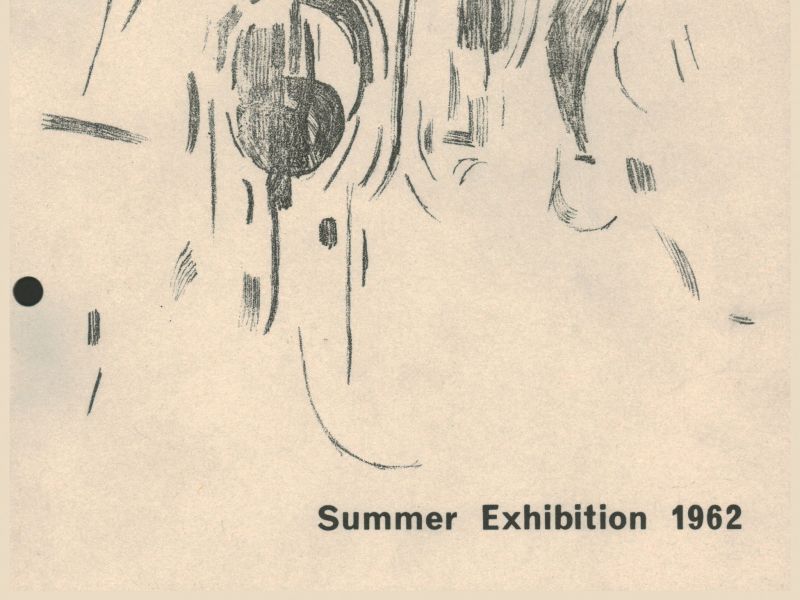
1962, Student Summer Exhibition, catalogue
The 1962 student Summer Exhibition catalogue with annotated front page.
In 1962 the external examiners were Robert Clatworthy and William Scott.
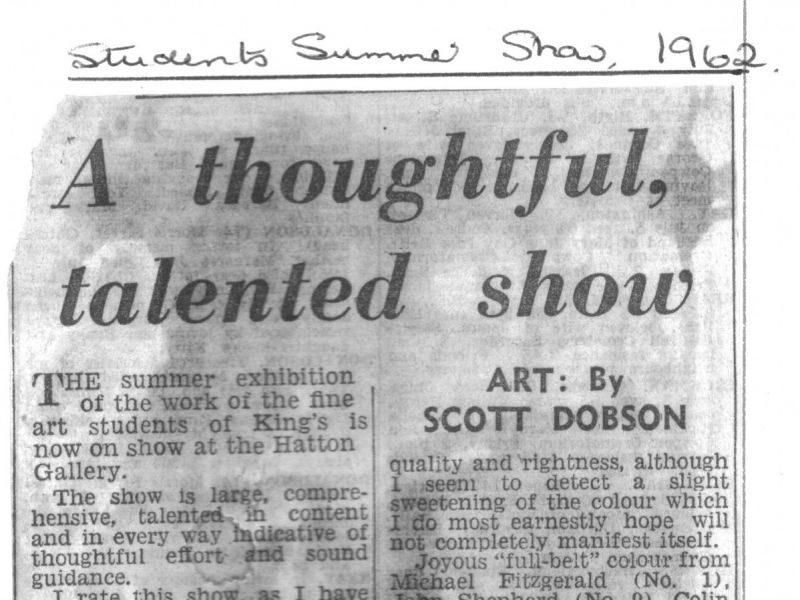
1962, Student Summer Exhibition, press review
Scott Dobson’s reviews were nearly always very supportive of the students and he picks out several here to mention by name, while also praising the whole show as ‘indicative of thoughtful effort and sound guidance.’
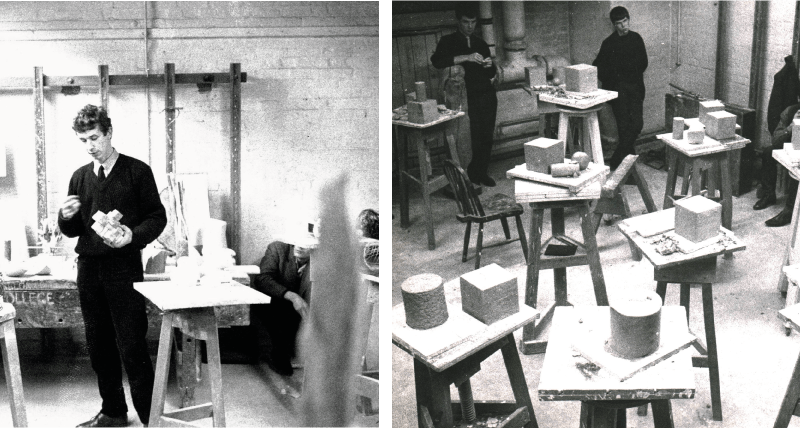
1962, studio photograph
Working in three dimensions was a central part of the ‘basic course’, which placed great emphasis on spatial relations. On the left Matt Rugg, who on graduating had been taken on as a Studio Demonstrator, can be seen leading a session in the sculpture studio.
(Photographs courtesy of the National Art Education Archive, Yorkshire Sculpture Park)
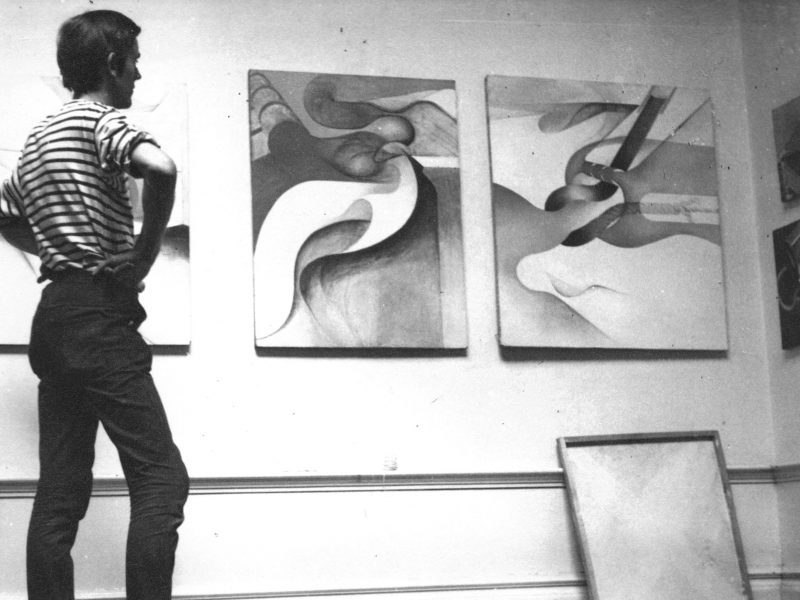
1962, degree show, photograph
Derek Morris admires works in fellow student Rita Donagh’s final show.
(image courtesy of Mary Webb).
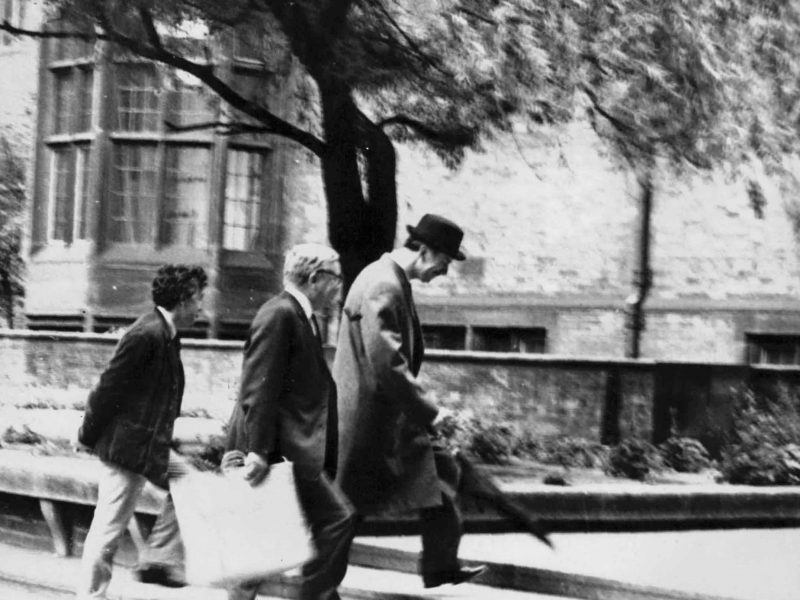
1962, staff photograph
Art Historian Ralph Holland leads Professor Kenneth Rowntree and tutor Eric Dobson up the steps from The Quadrangle to the entrance of the King Edward VII building.
(Photograph by Ralph Selby, courtesy of Mary Webb).
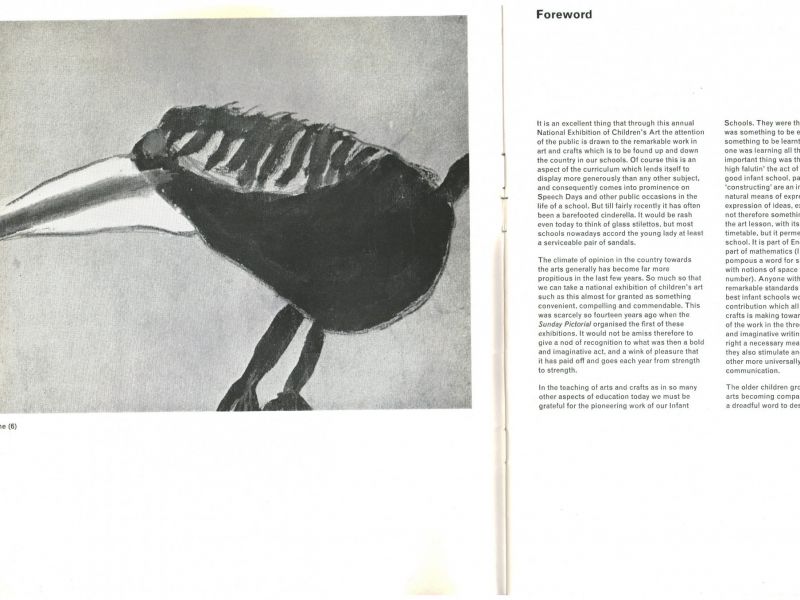
1962, ‘Child Art’, exhibition catalogue
Many of the artist-teachers who first conceived ‘Basic Design’ were very interested in ‘Child Art’, believing it to be produced with fewer preconceptions and greater freedom of expression than that of adults. It is interesting to note that the Advisory Committee for the touring Sunday Pictorial National exhibition of Children’s art, which toured to the Laing Art Gallery in 1962, included Herbert Read, Eduardo Paolozzi and Victor Pasmore, and the preliminary selection committee included Tom Hudson, one of the originators of the ‘basic course’.
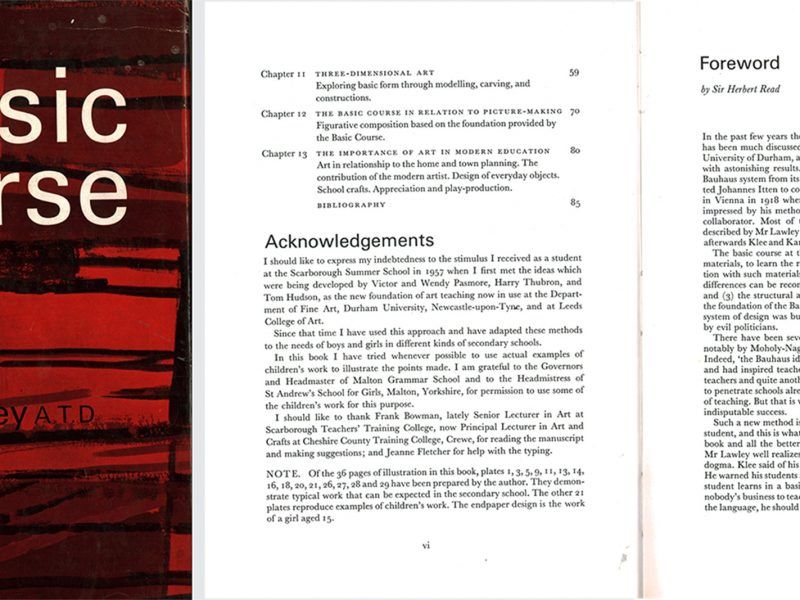
1962, Leslie Lawley’s ‘A Basic Course in Art’ cover
Leslie Lawley’s book was one of the first widely available books to describe ‘a ‘basic course’ in art’, though he focused more on the teaching of school children than students.
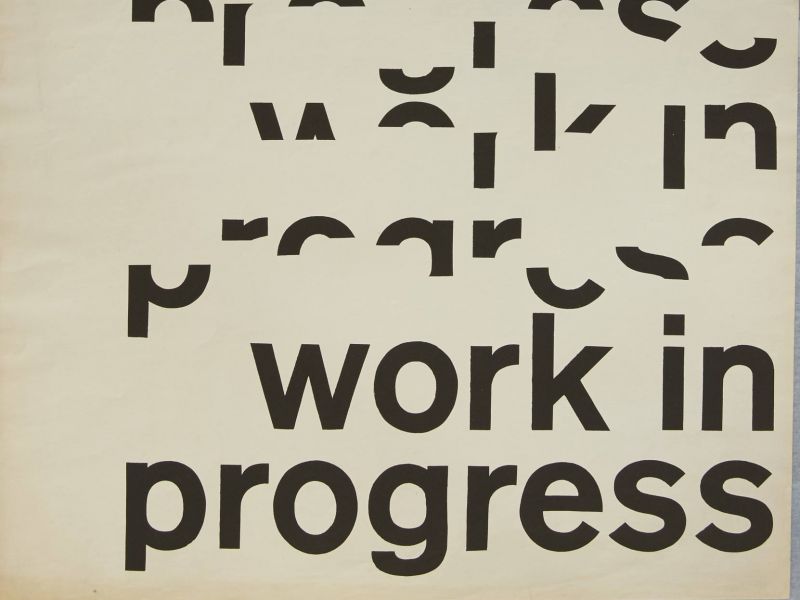
1963, student Work in Progress exhibition, poster
The manipulation of text in the poster for the 1963 student Work in Progress exhibition would seem to relate more to Hamilton’s interest in graphic design than many of the earlier student posters, which tended be abstract and relate more to ‘basic course’ exercises.
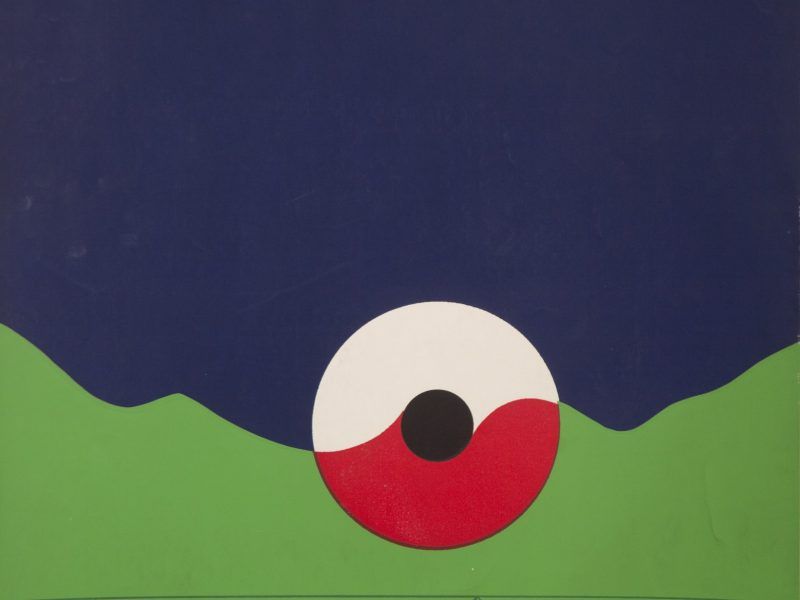
1963, Student Summer Exhibition, poster
The screenprinted poster for the student 1963 Summer Exhibition was a departure from previous ones in its use of bold, flat areas of colour.
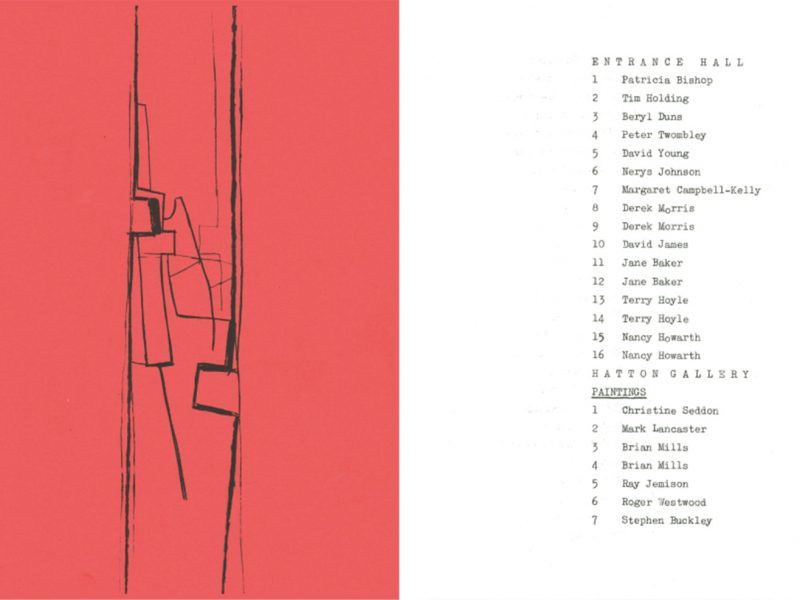
1963, Student Summer Exhibition, catalogue
Cover and inside page of the 1963 student Summer Exhibition.
In 1963 the external examiners were Robert Clatworthy and William Scott.
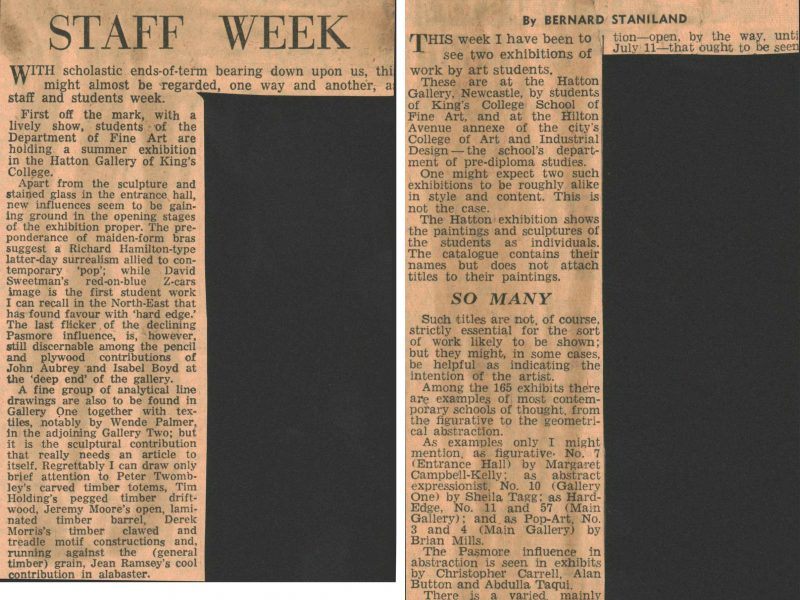
1963, Student Summer Exhibition, press reviews
Both Bernard Staniland and W.E. Johnson’s reviews note the variety of works on display with ‘examples of most contemporary schools of thought, from the figurative to the geometrical abstraction’. Though both note signs of his presence, for Johnson it is the ‘last flicker of the declining Pasmore influence’. Derek Morris and Jean Ramsey’s sculptures are highlighted in both reviews.
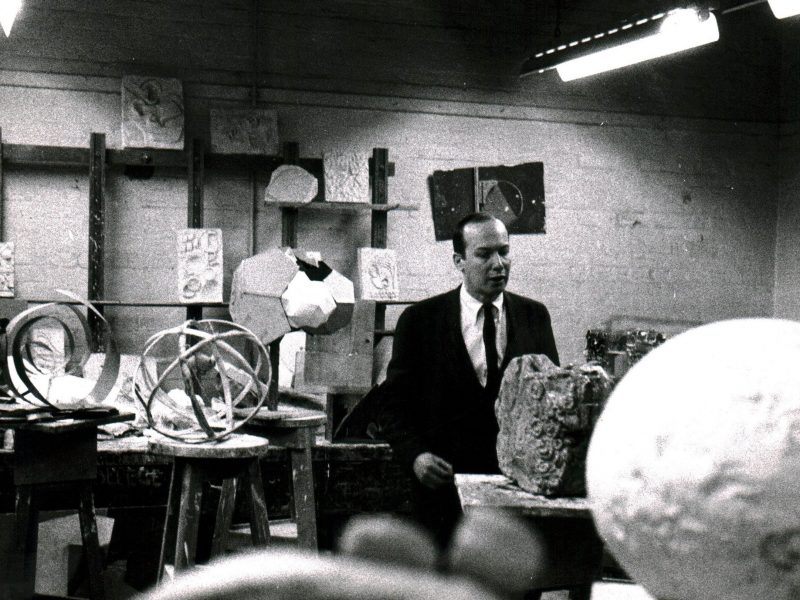
1963, Richard Smith, studio photograph
The artist Richard Smith was a visiting tutor in 1963. Though best known as a painter focused on colour, here he can be seen conducting a teaching session in the sculpture studio.
(Photograph courtesy of the National Art Education Archive, Yorkshire Sculpture Park)
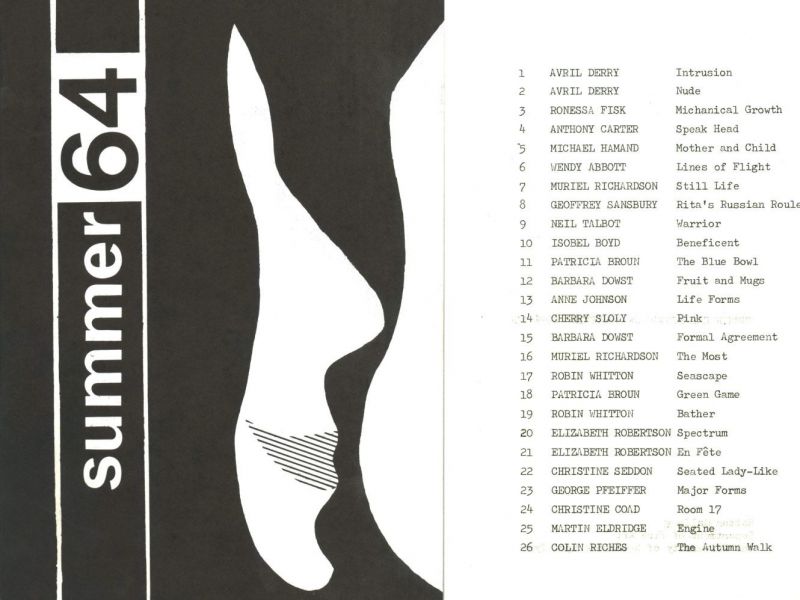
1964, Summer Exhibition, catalogue
The cover of the 1964 Summer Exhibition catalogue had a clearly figurative design, a possible indication of a move away from an adherence to Pasmore’s strict abstract philosophy, towards Hamilton’s broader outlook.
In 1964 the external examiners were Lawrence Gowing and Ralph Brown.
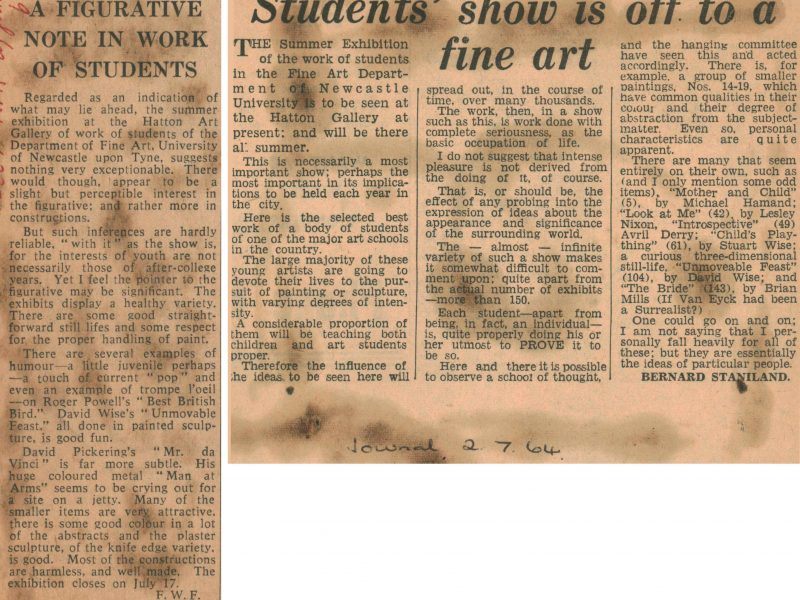
1964, Student Summer Exhibition, press review
As the initial impact of Pasmore and the ‘basic course’ started to wain, reviews of the Student Summer exhibitions tended to highlight the ‘variety’ of styles and artists doing something different alongside the various ‘harmless and well made’ constructions.
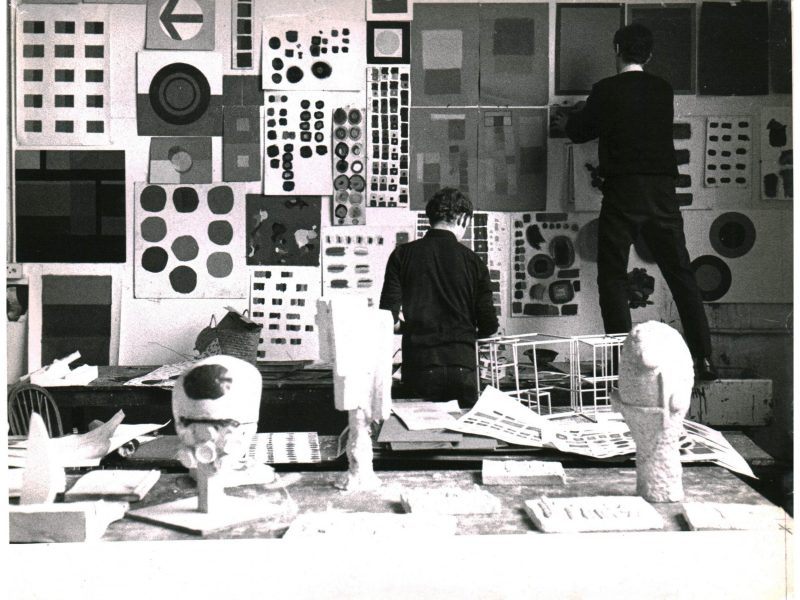
1964, Basic course exercises, photograph
Students can be seen here pinning up the outcomes of various exercises focused on colour, ready for group discussion and analysis.
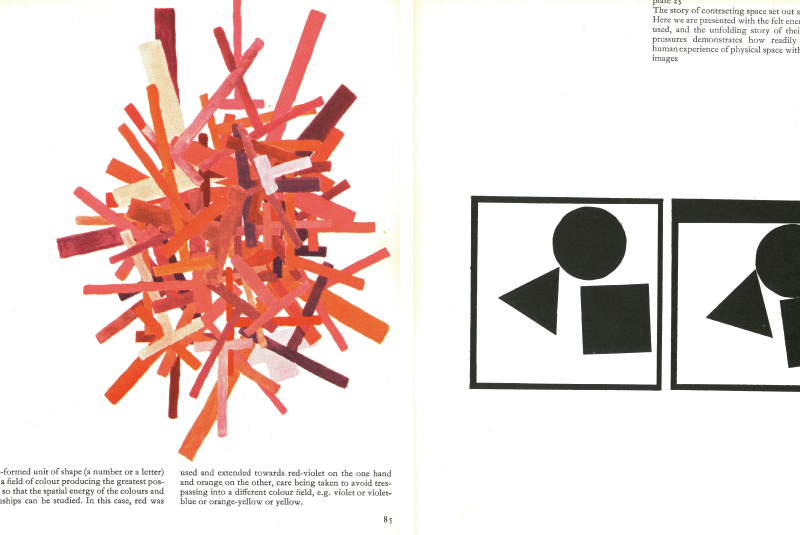
1964, Maurice de Sausmarez’s book, ‘Basic design: the dynamics of visual form’
Maurice de Sausmarez’s small, but popular and influential book ‘Basic design: the dynamics of visual form’, first published in 1964, examines visual concepts such as space, colour and ‘dynamic forces’. He particularly acknowledges Harry Thubron ‘whose work has contributed much to art education.’ He aimed to encourage in young artists ‘a constant inquisitiveness about the phenomena of pictorial and plastic expression.’
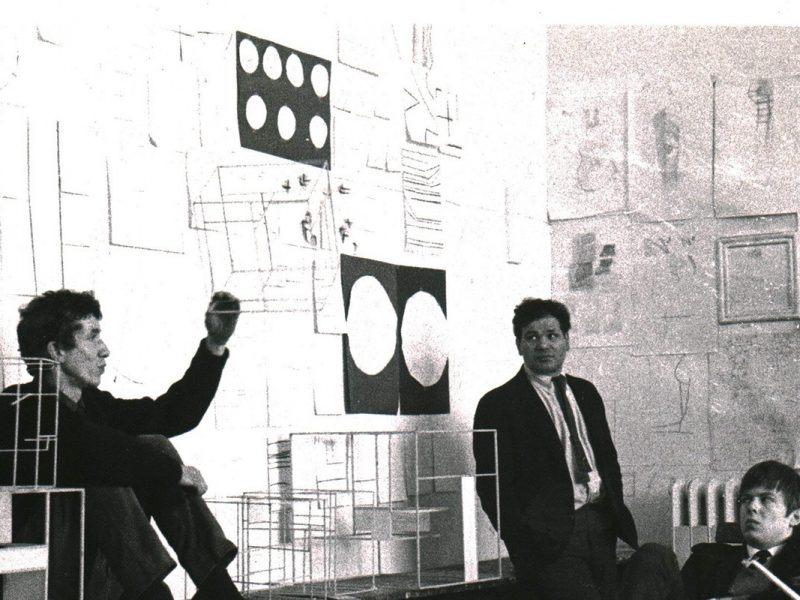
1965, Eduardo Paolozzi, studio photograph
In 1965, Eduardo Paolozzi, as well as having a major exhibition in the Hatton Gallery, was also a visiting tutor in the Fine Art Department. Like Richard Smith in 1963, he can be seen working across mediums, apparently giving hands on, practical instruction in the sculpture studio and involved in a discussion with painting lecturer Matt Rugg.
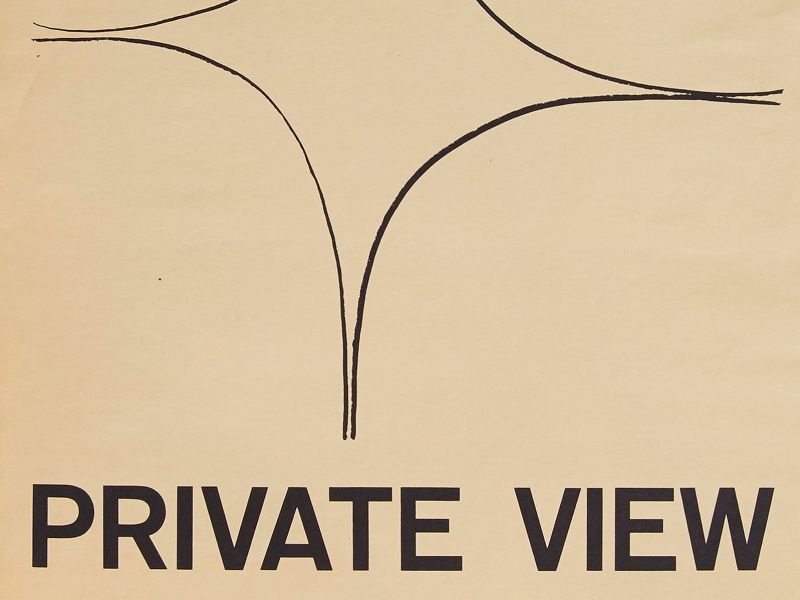
1965, Private View, poster
In 1964 Professor Rowntree had introduced a new student exhibition called ‘Private View’ in the Feb-April period. Replacing a regular ‘Work in Progress’ exhibition, the new innovation was that it would be selected by a different art world figure each year, in the opening year this had been the Department’s Art Historian, Ralph Holland. In 1965 the exhibition was selected by artist Terry Frost, who had been an artist-in-residence in the Fine Art Department in 1964 and may well have designed the poster himself.
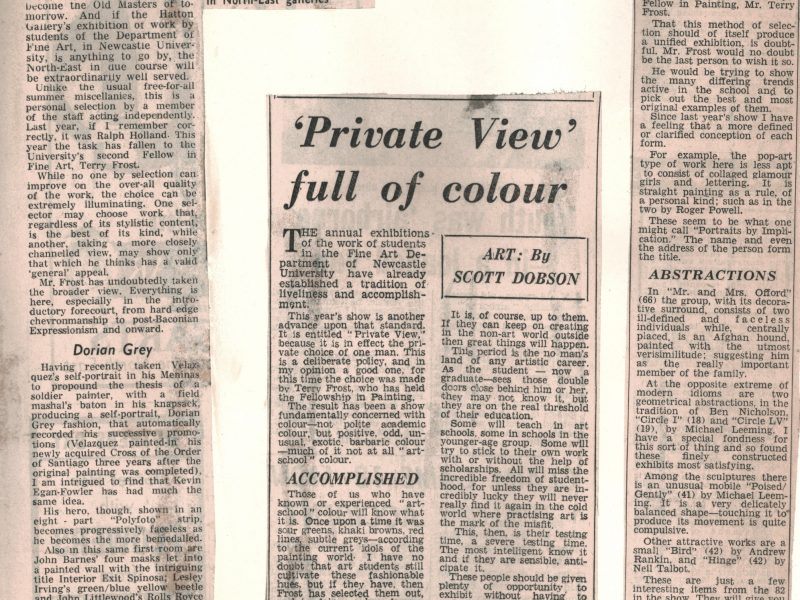
1965, Private View, press review
The Terry Frost selected ‘Private View’ exhibition warranted reviews from three of the North East’s leading critics, for W.E.Johnson the exhibition had everything from ‘hard-edged chrevronmanship to post-Baconian Expressionism and onward.’ Scott Dobson thought ‘the work shown is of quite an amazing standard of accomplishment both on the technical and creative side’, so much so that he didn’t want to single out anyone for special mention.
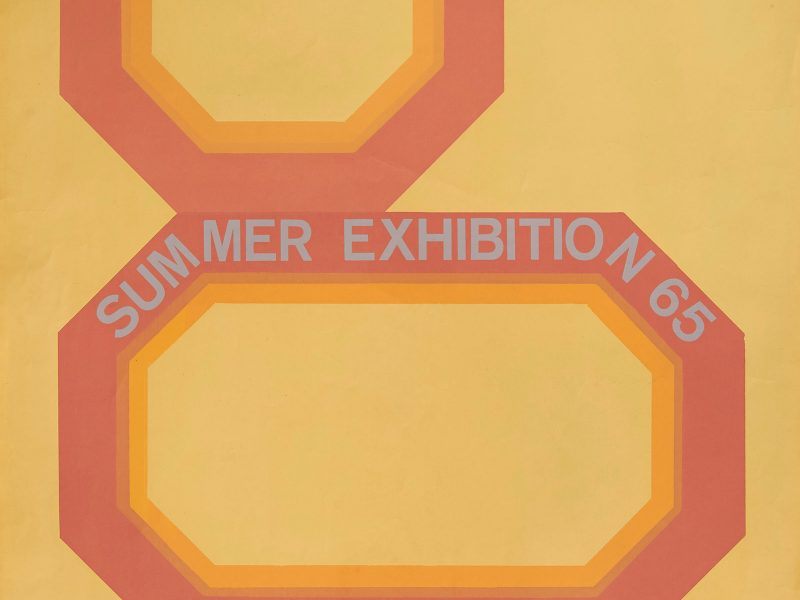
1965, Summer Exhibition, poster
Through the 1960s the posters and catalogues for student exhibitions begin to look less like exercises from Pasmore’s ‘basic course’, with external influences from both pop and colour-field abstract art becoming evident.
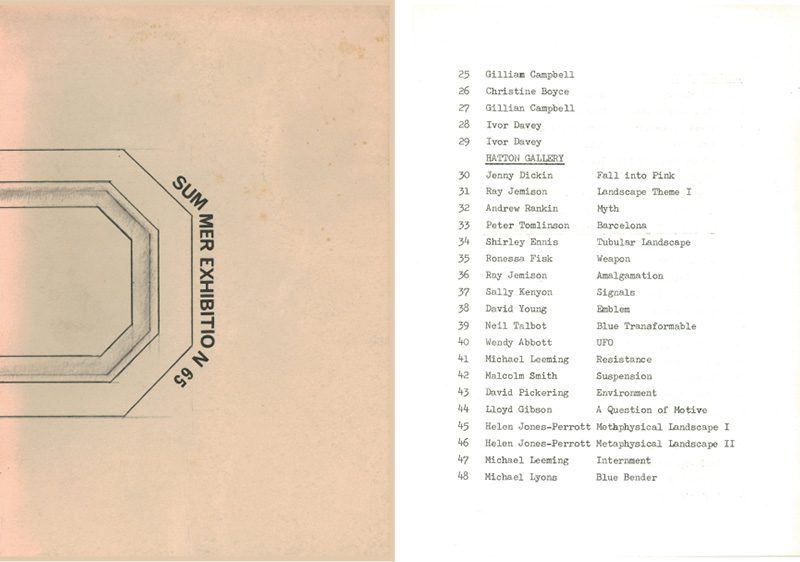
1965, Summer Exhibition, catalogue
The cover catalogue for the 1965 Student Summer Exhibition utilises the same form found in the colour poster, but presented in a very different way.
In 1965 the external examiner was Claude Rogers and the John Bell Simpson student prize winner was Stephen Buckley.
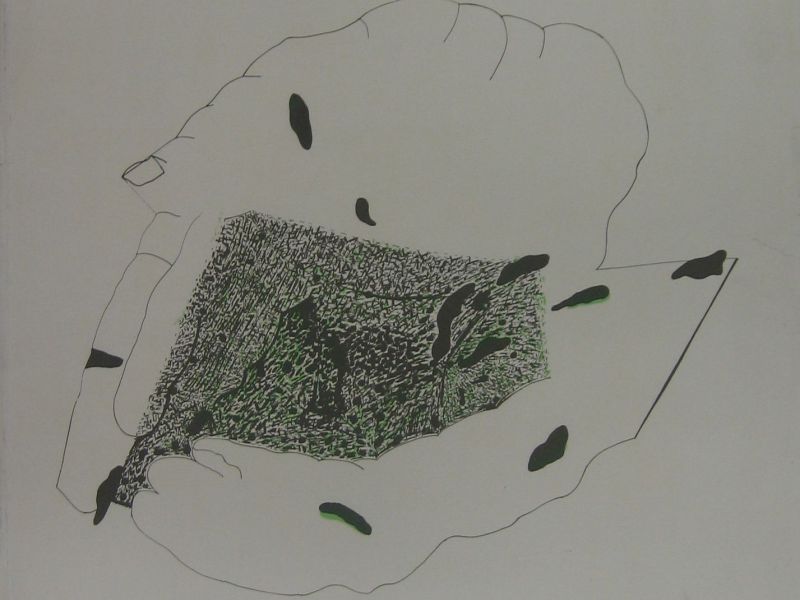
1966, Private View, poster
1966 the students’ Private View exhibition was selected by Ronald Alley, then the Keeper of the foreign modern collections at the Tate Gallery, London.
In 1966 the external examiners were Claude Rogers and Sandra Blow, the John Bell Simpson prize was awarded to Stanley Greaves, the Hatton Scholarship to Stephen Buckley and the John Christie Scholarship to Richard Yeomans.
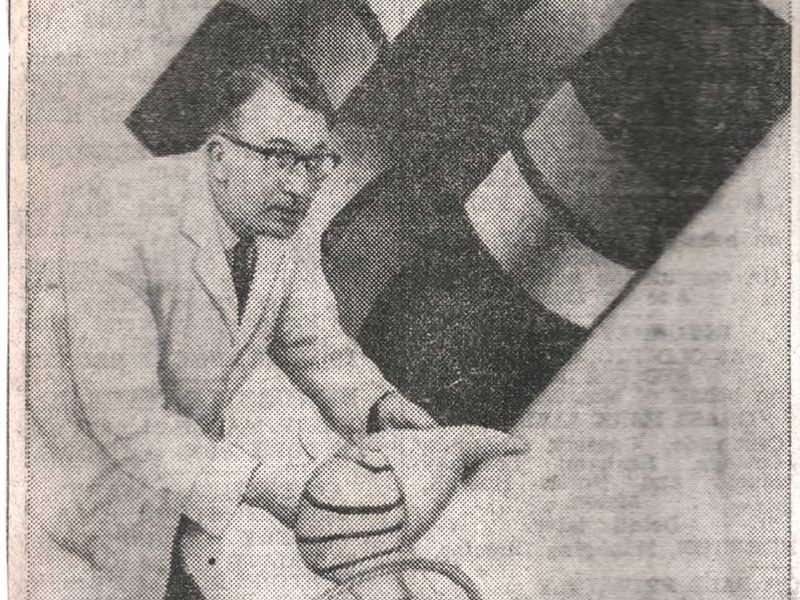
1966, Private View, press cutting
Departmental technician Richard Ayre is pictured in this brief article from The Journal covering the Ronald Alley selected ‘Private View’ student exhibition.
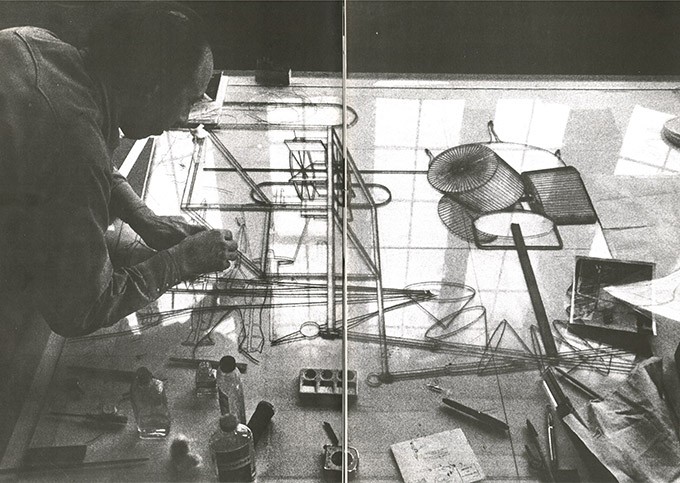
1966, Richard Hamilton, studio photograph
In 1966 Richard Hamilton was in his final year working in Newcastle, much of his time was taken up working on his reconstruction of Duchamp’s ‘The Large Glass’, which a number of students also assisted with and which was exhibited in the Hatton Gallery in May of that year before travelling to the Tate Gallery.
Hamilton’s departure is noted in the minutes of the University’s Art Committee meeting in October 1966 with this brief entry – c) ‘Certain auxillary adjuncts to the course are left without adequate teaching or provision by the resignation of RH, particularly certain graphic processes and photographic’.
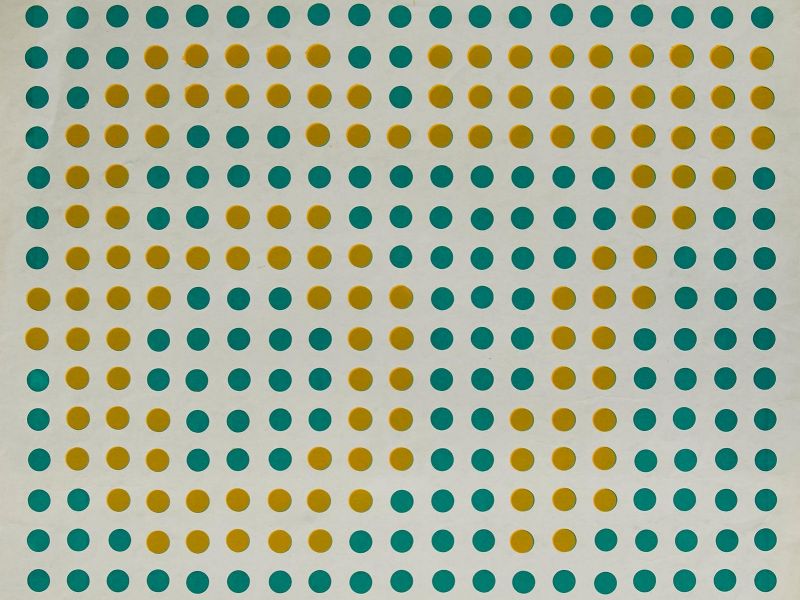
1967, Student Summer Exhibition, poster
The ‘Op Art’ derived poster for the 1967 Student Summer Exhibition is unusual in the image being evidently designed specifically for the poster, rather than an existing piece of students’ work being selected.
In 1967 the external examiners were Robert Adams and William Scott, the John Bell Simpson prize winner was Mike Brick and Hatton Scholarships were awarded to Lloyd Gibson and Mali Morris.
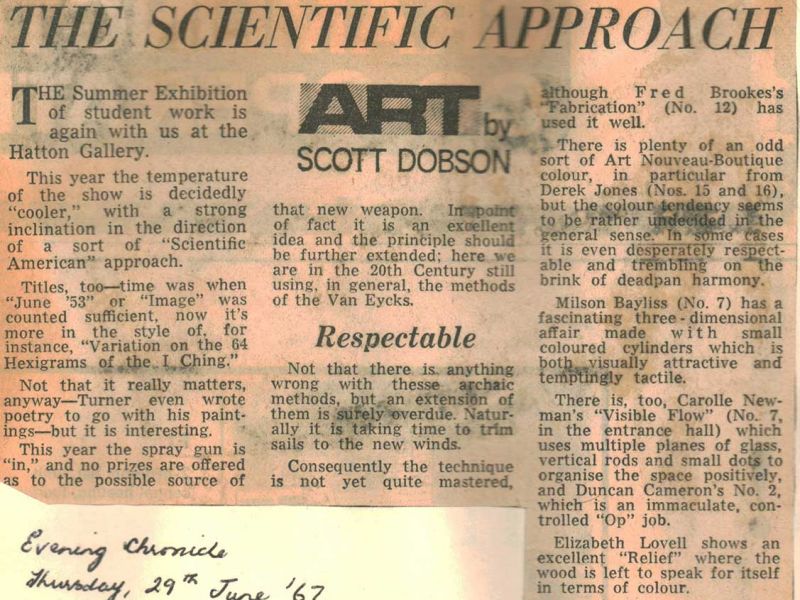
1967, Summer Exhibition, press review
Scott Dobson and William Varley’s reviews of the 1967 student Summer Exhibition both pick out a number of different artists to mention, and recognise the diversity of styles and approaches amongst the students’ work.
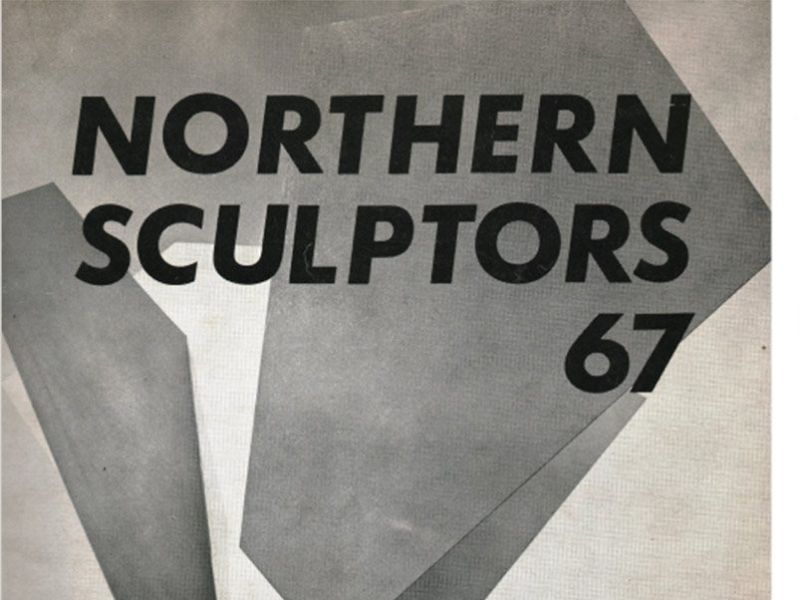
1967, Northern Sculptors 67, catalogue
Catalogue cover and page, featuring Geoffrey Dudley (by then teaching at Chelsea rather than Newcastle), for the ‘Northern Sculptors 67’ competition and exhibition held at the Shipley Art Gallery, April-May 1967. 23 finalists were chosen for the exhibition from 120 entrants, among them were former King’s College students Robin Crozier, David Humphreys, Neil Talbot, Matt Rugg and Derek Carruthers (who won one of the prizes) as well as tutors Geoffrey Dudley and Derwent Wise.
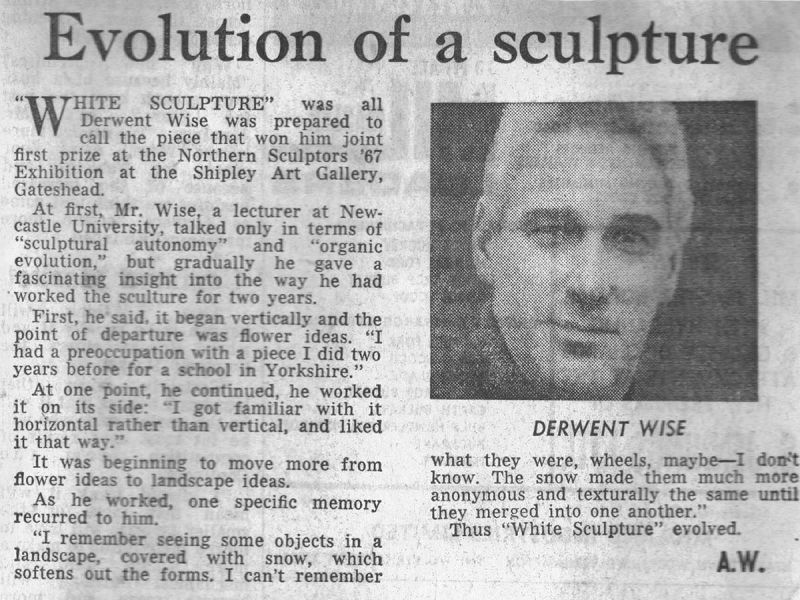
1967, Northern Sculptors 67, press review
Sculpture tutor Derwent Wise’s success in the ‘Northern Sculptors 67’ competition is reported here in The Journal. The three eminent competition judges were Alan Bowness, David Sylvester and sculptor Hubert Dalwood, Wise’s winning ‘White Sculpture’ was subsequently purchased for the Arts Council Collection.
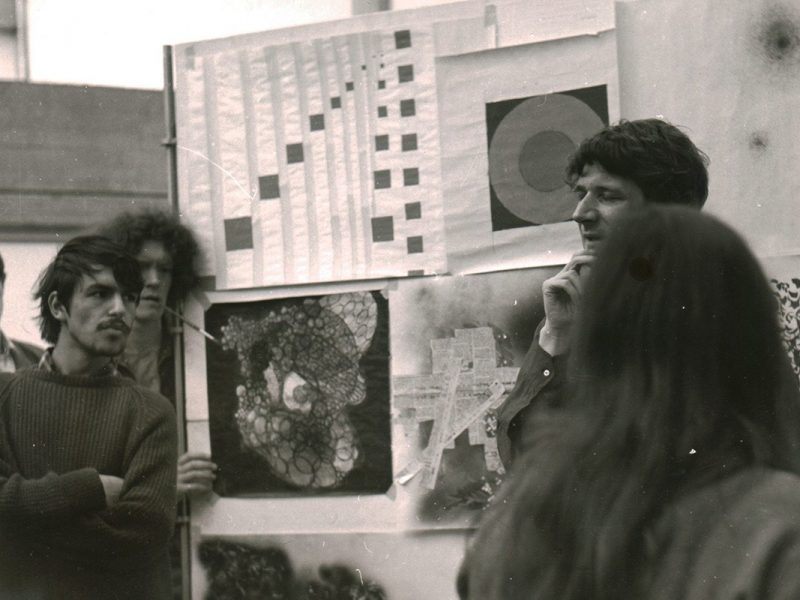
1967, Ian Stephenson, studio photograph
In 1967 Ian Stephenson was appointed to replace Hamilton as director of Foundation Studies. Stephenson had been a student in the Fine Art Department between 1951-56. On finishing his degree he was appointed Tutorial Student, then Studio Demonstrator as Pasmore’s ‘basic course’ was being developed 1956-58, before going on to teach at Chelsea School of Art.
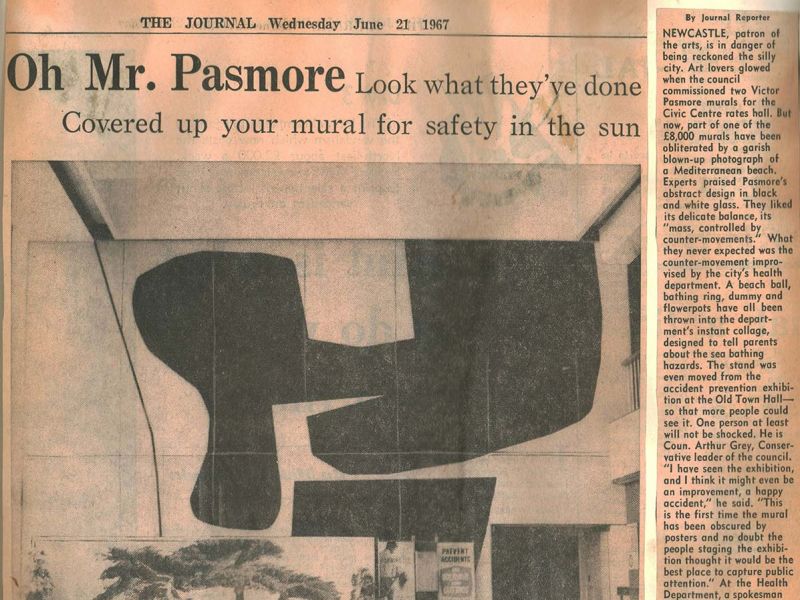
1967, Pasmore’s murals, press article
Although seven years after having left his Newcastle teaching post, Pasmore still attracted local press attention, though this is towards the ‘silly season’ category. Pasmore’s two murals in the Civic Centre Rates Hall had been unveiled in 1963, in June 1967 an accident prevention display was placed in front of it…
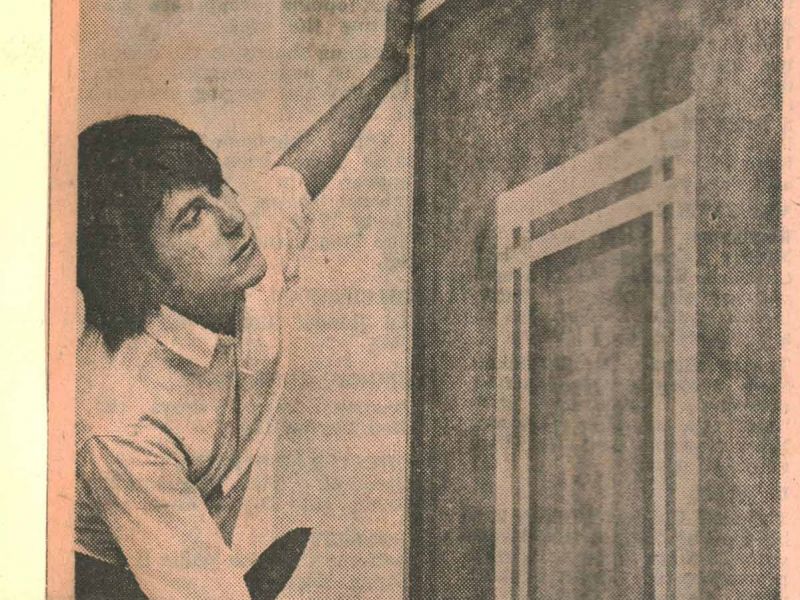
1967, Bryan Ferry’s abstract paintings, press review
Recent graduate Bryan Ferry attracted the attention of The Journal with his first public showing of his abstract paintings, though he recognised that finding a local market for such works would be difficult.
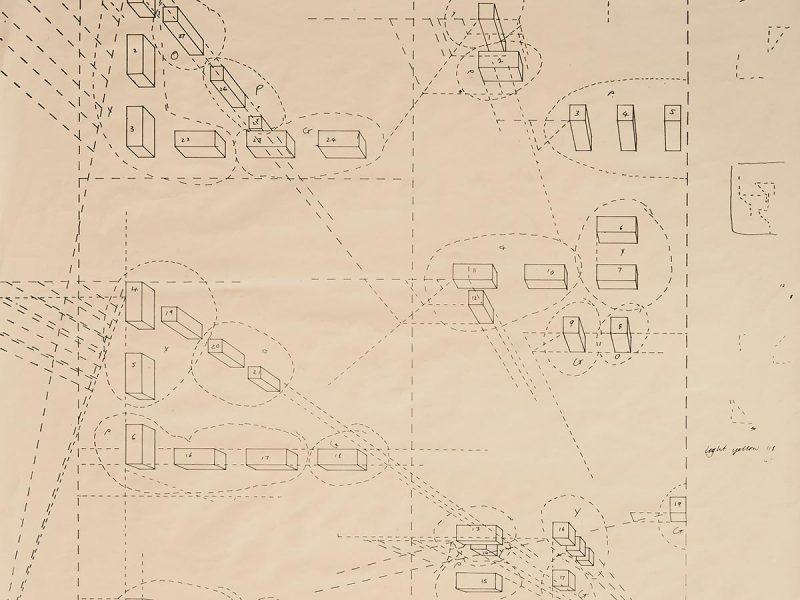
1968, Summer Exhibition, poster
Poster for the 1968 student Summer Exhibition.
In 1968 the external examiners were F.E. McWilliam and William Scott.
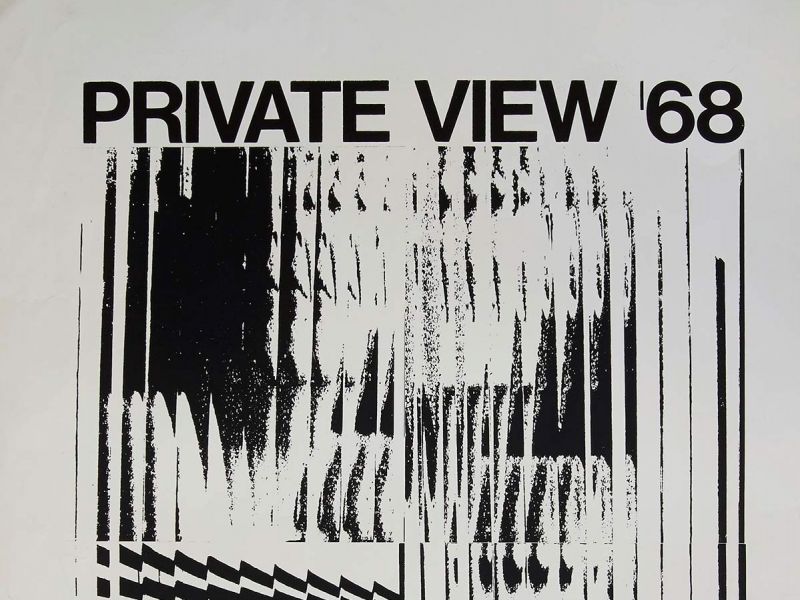
1968, Private View, poster
In 1968 the Private View series of student exhibitions was selected by Alexander Dunbar, the founder and then director of Northern Arts, one of the first regional art associations. The poster is one of the first for student exhibitions to utilise photography as part of the design.
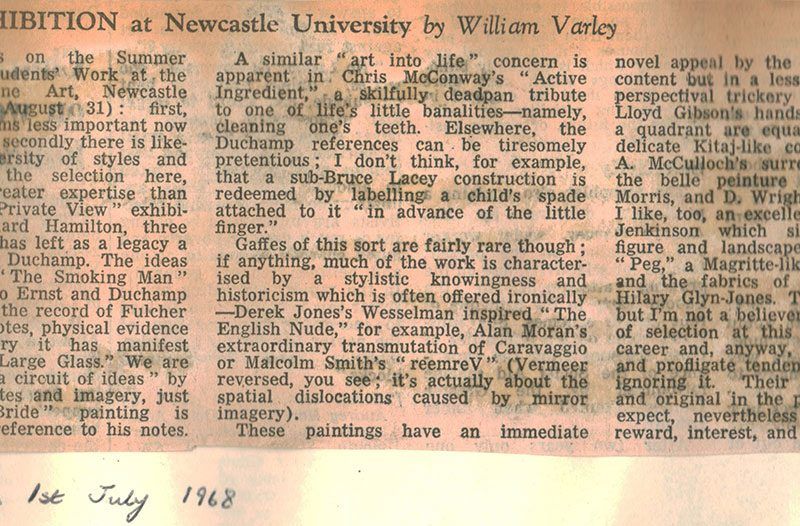
1968, William Varley, press review
In his review for the Guardian William Varley identifies an increasing diversity in the work of the students, though also a lingering influence from Richard Hamilton through an evident interest in Marcel Duchamp. He concludes that the exhibition is ‘derivative and original in the proportions one might expect…’.